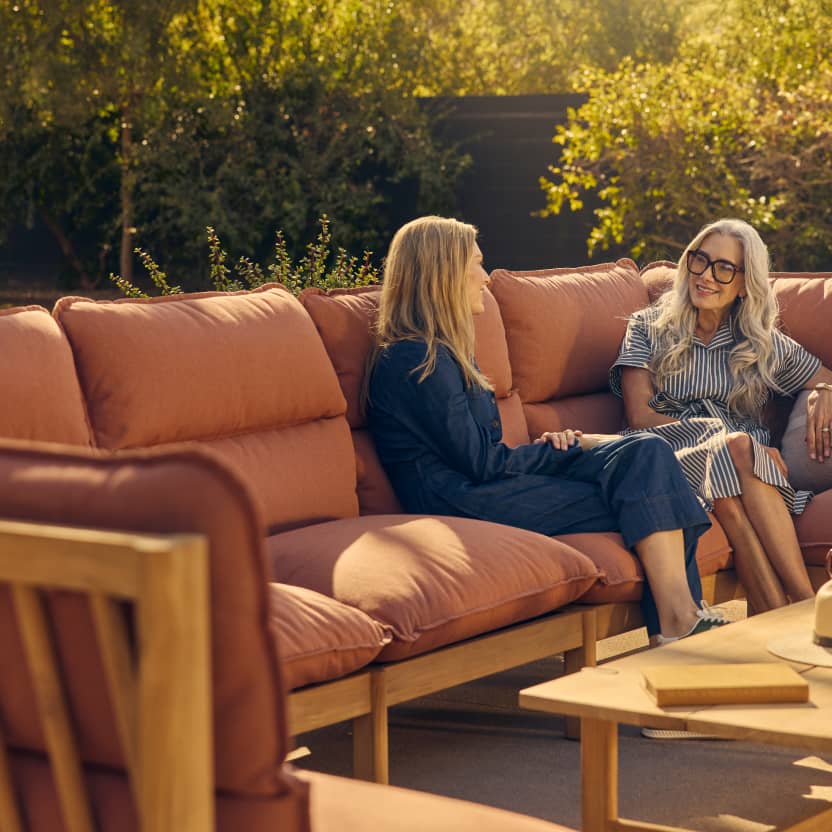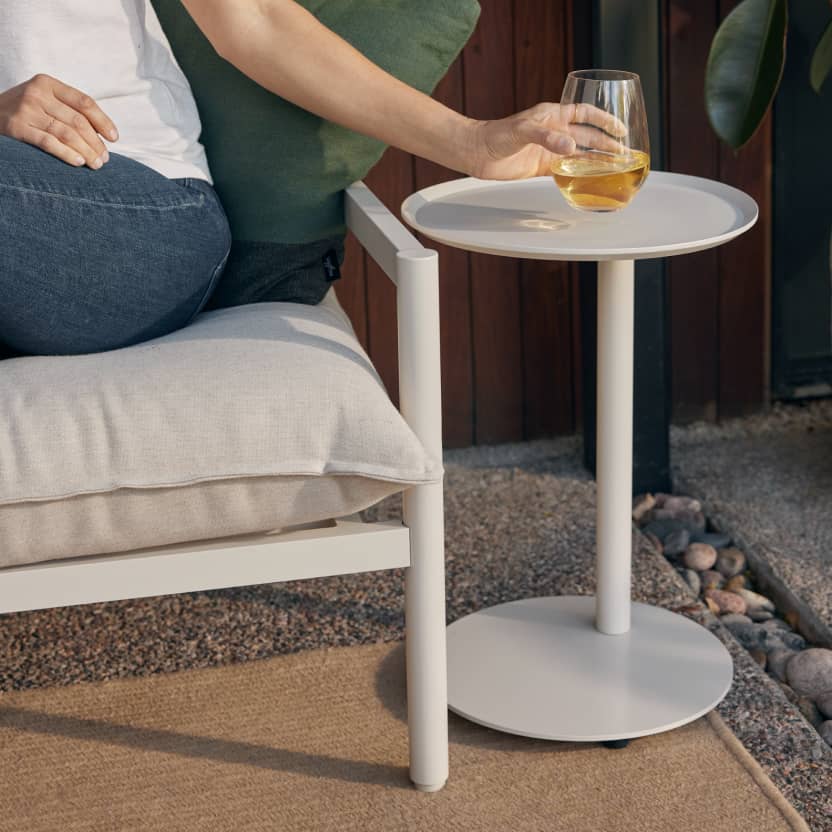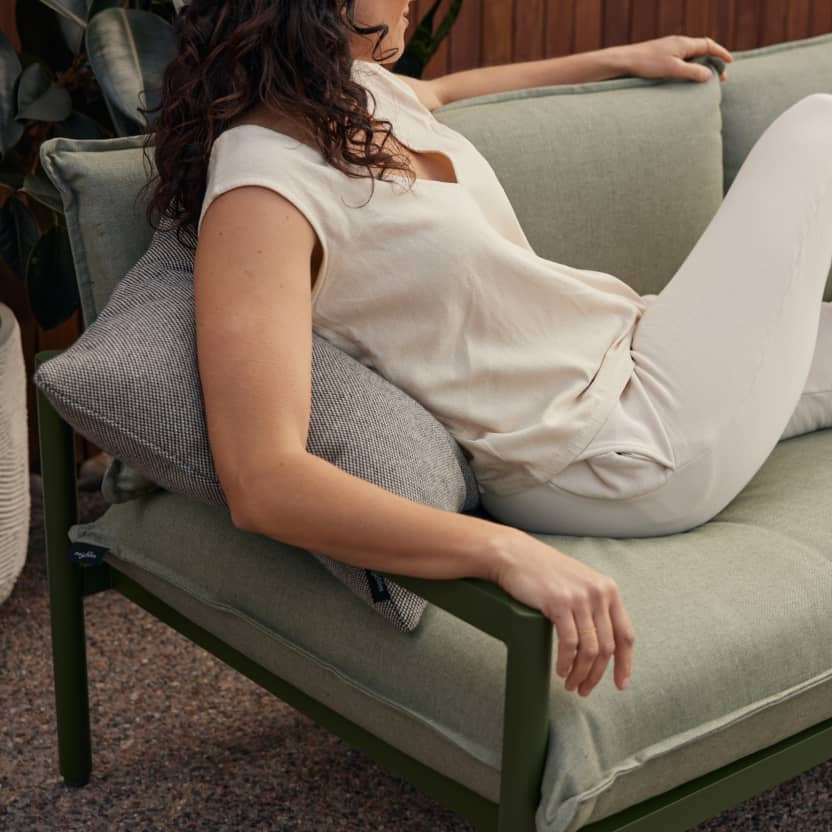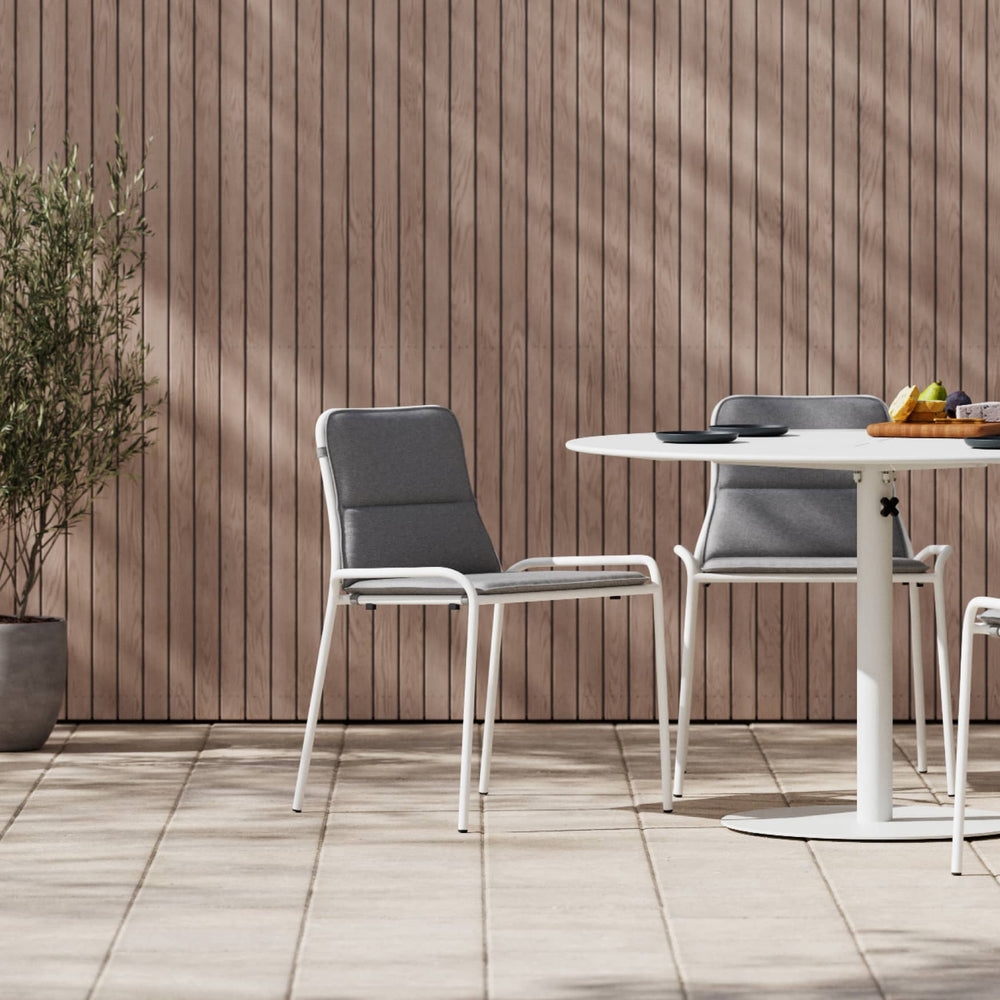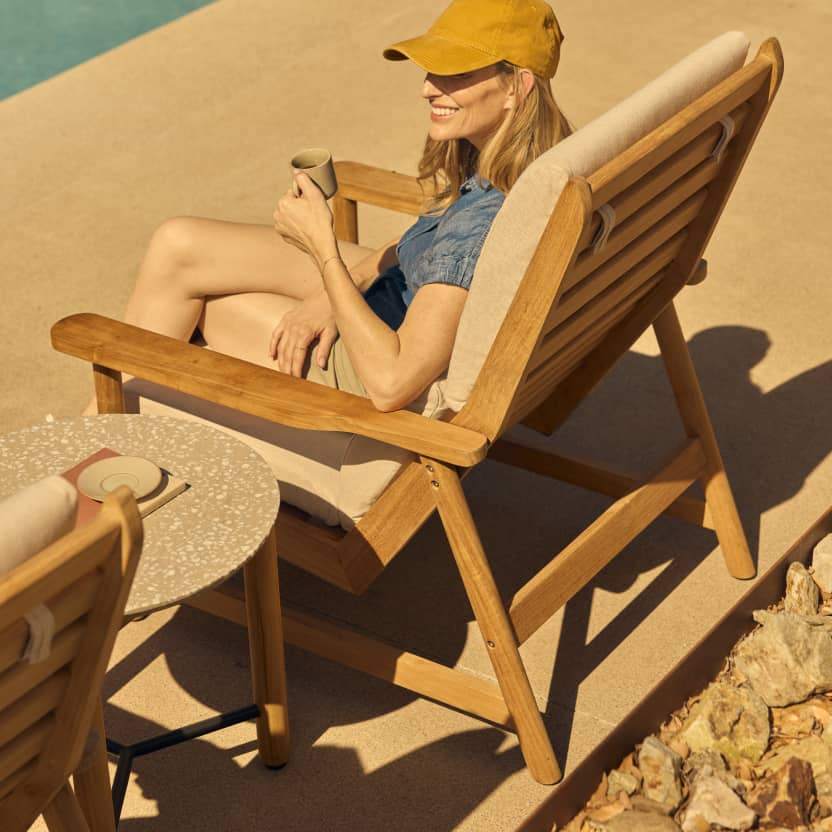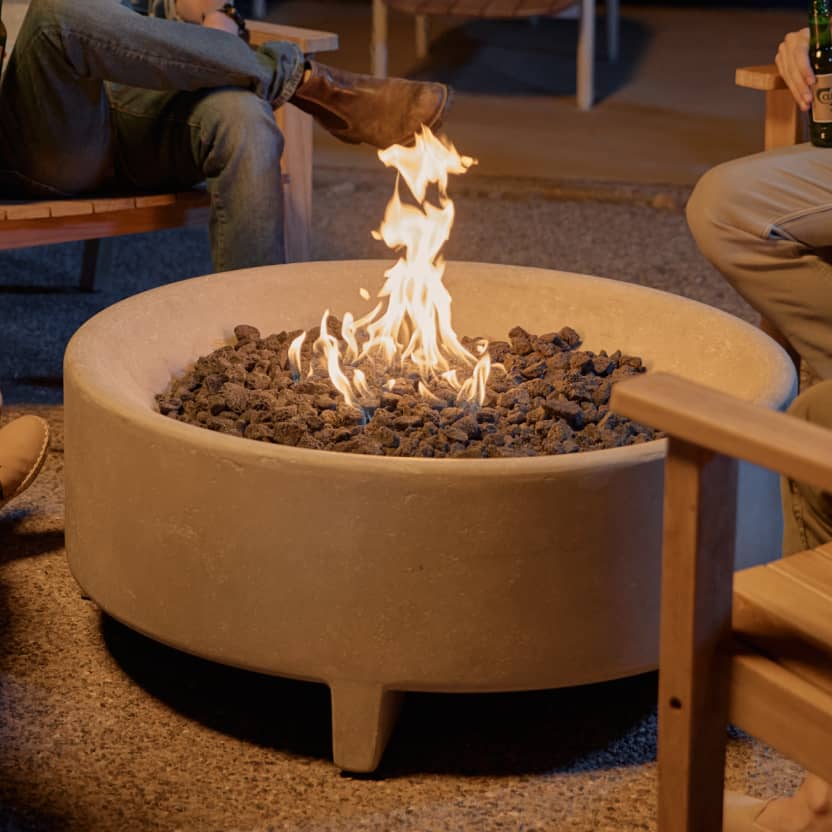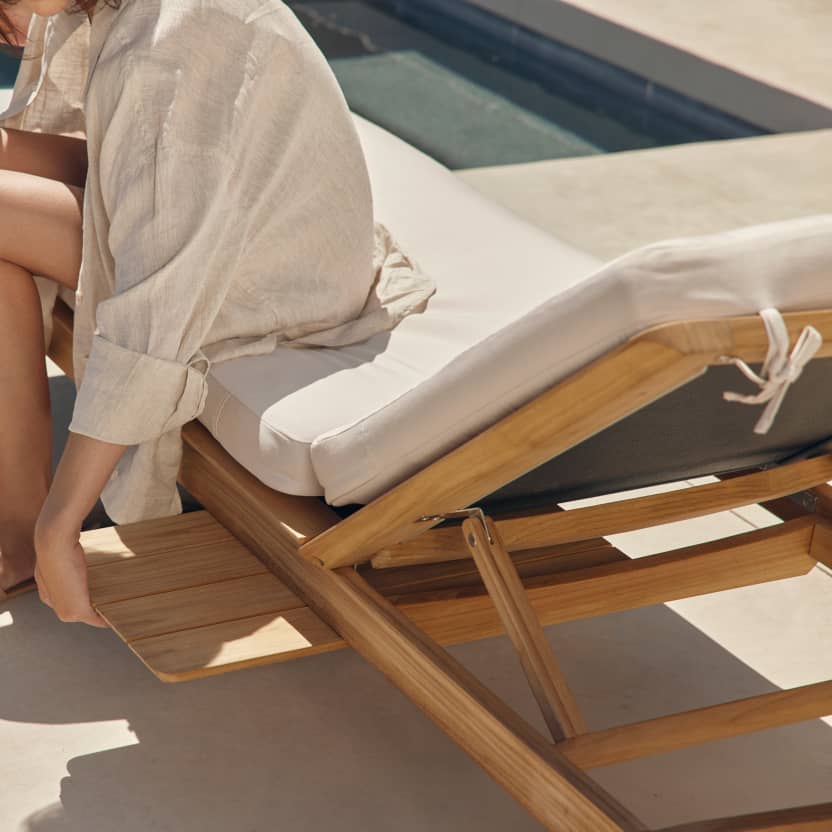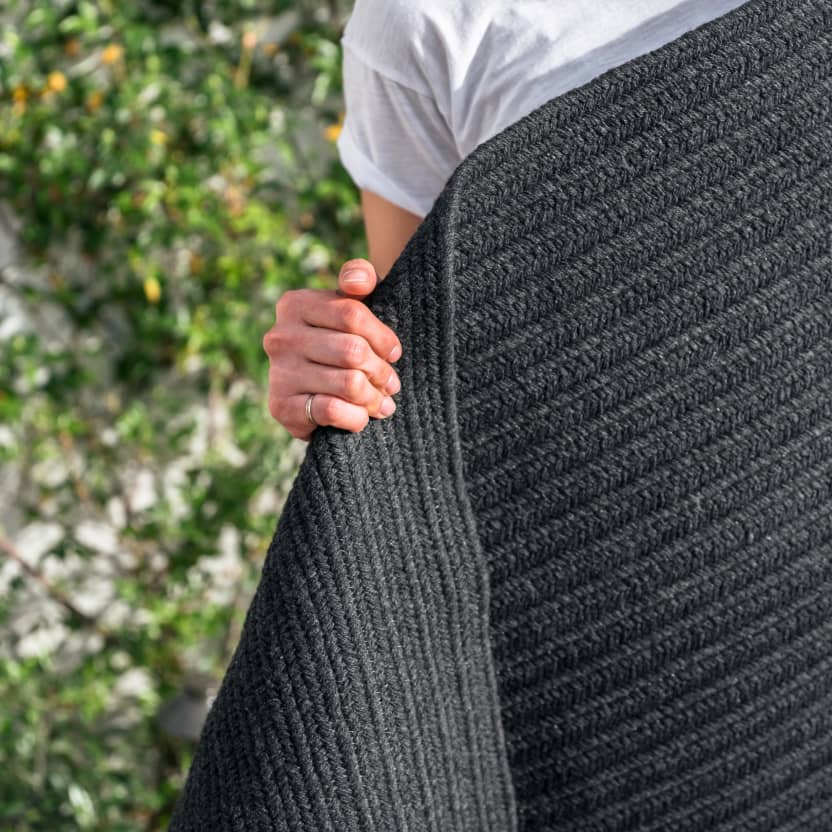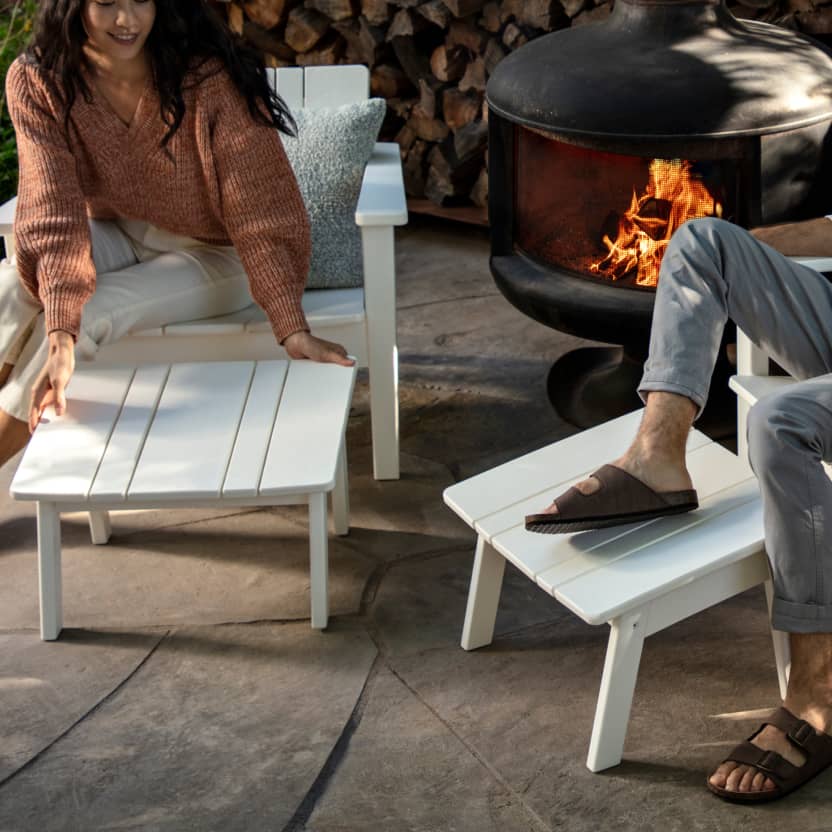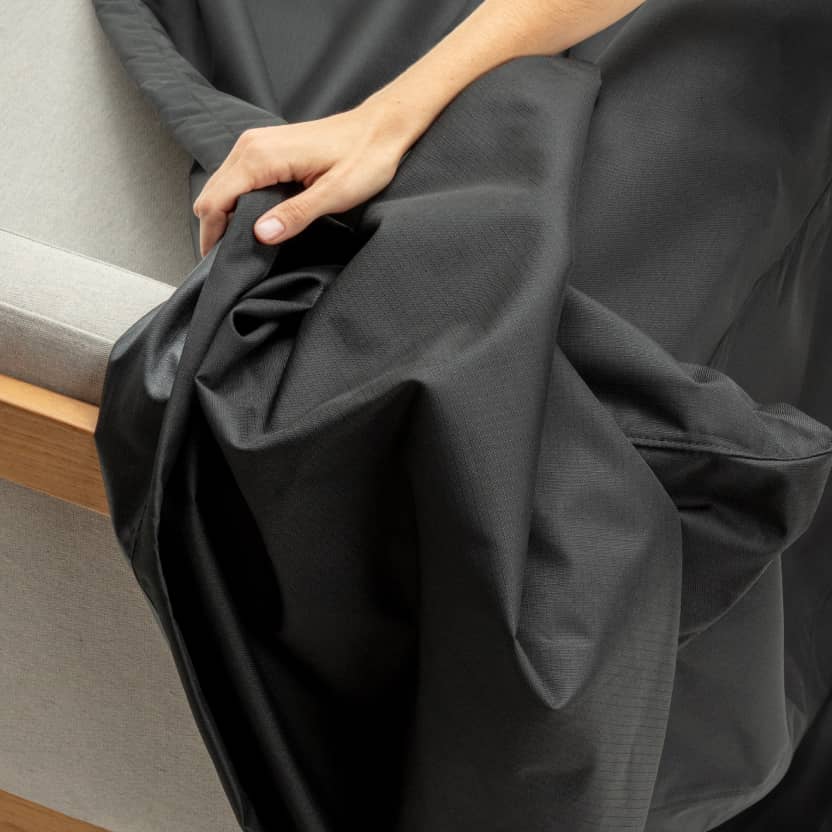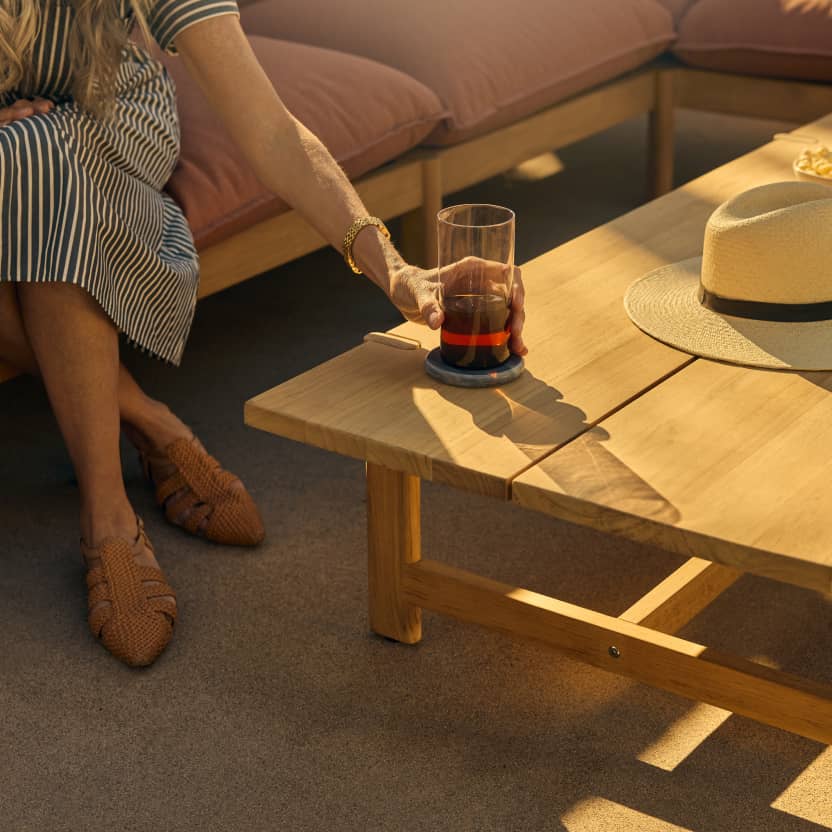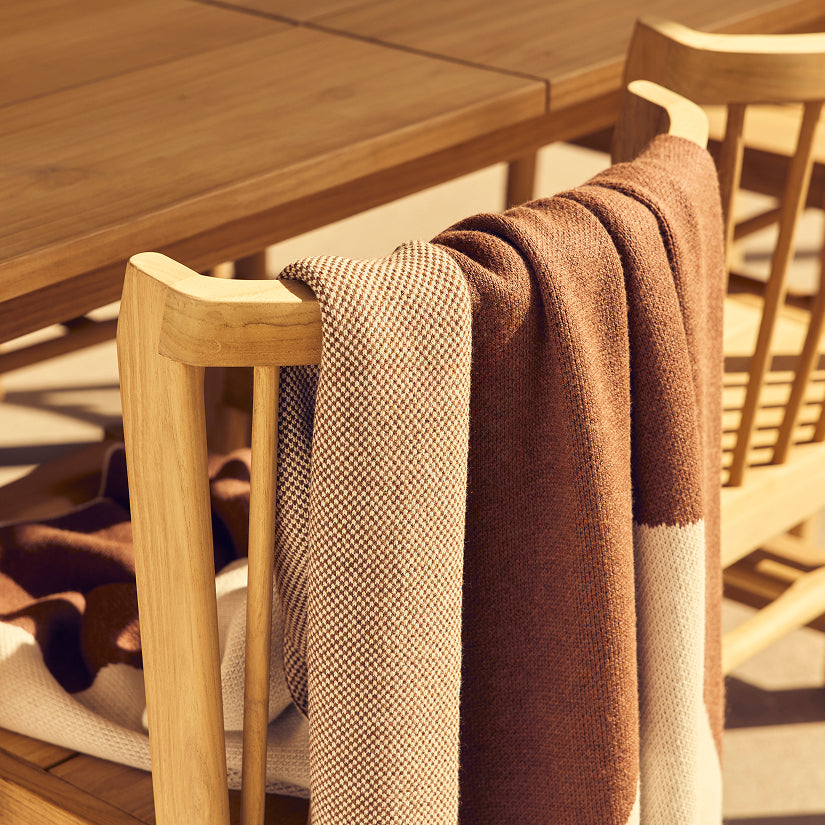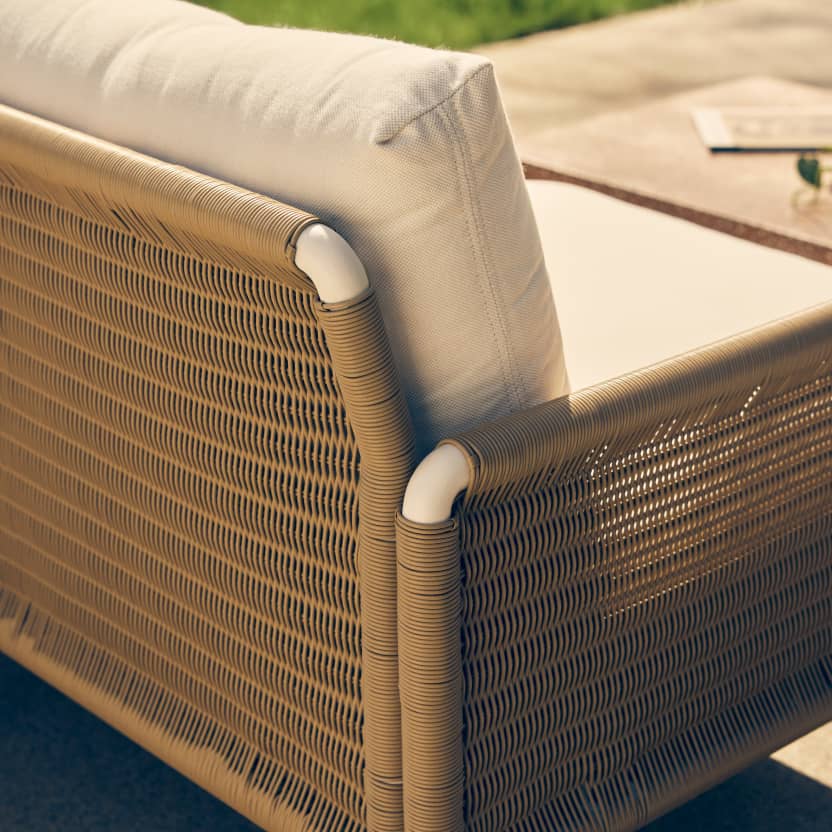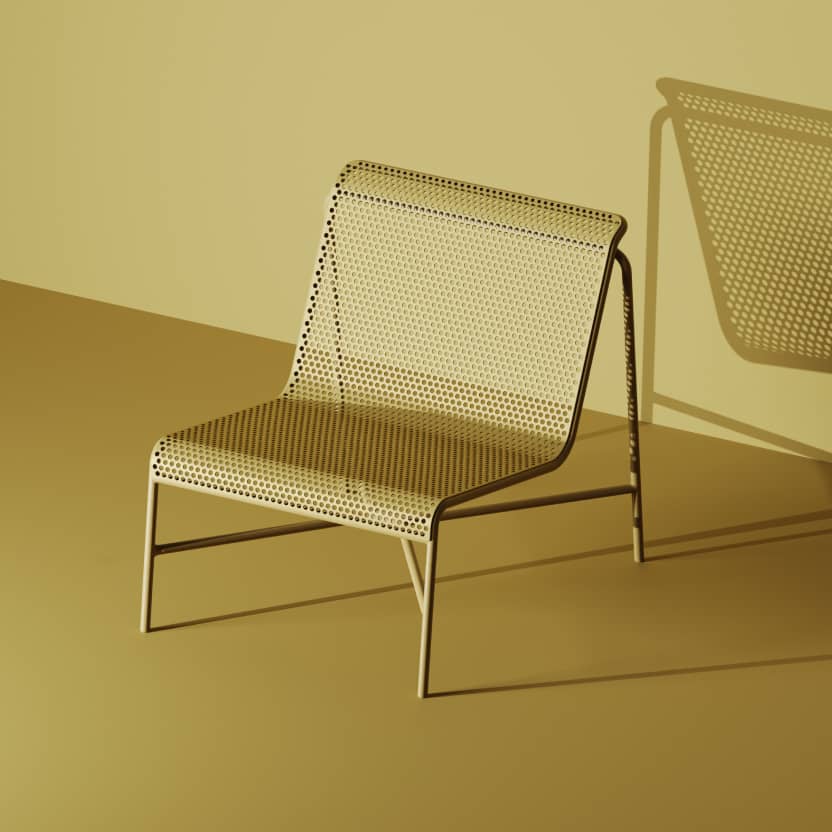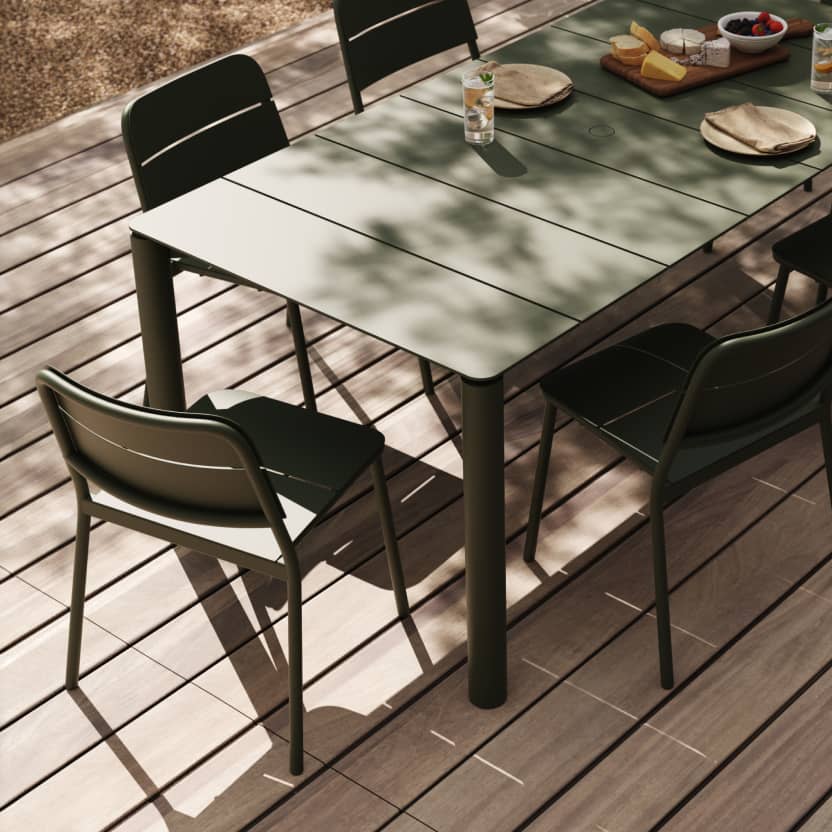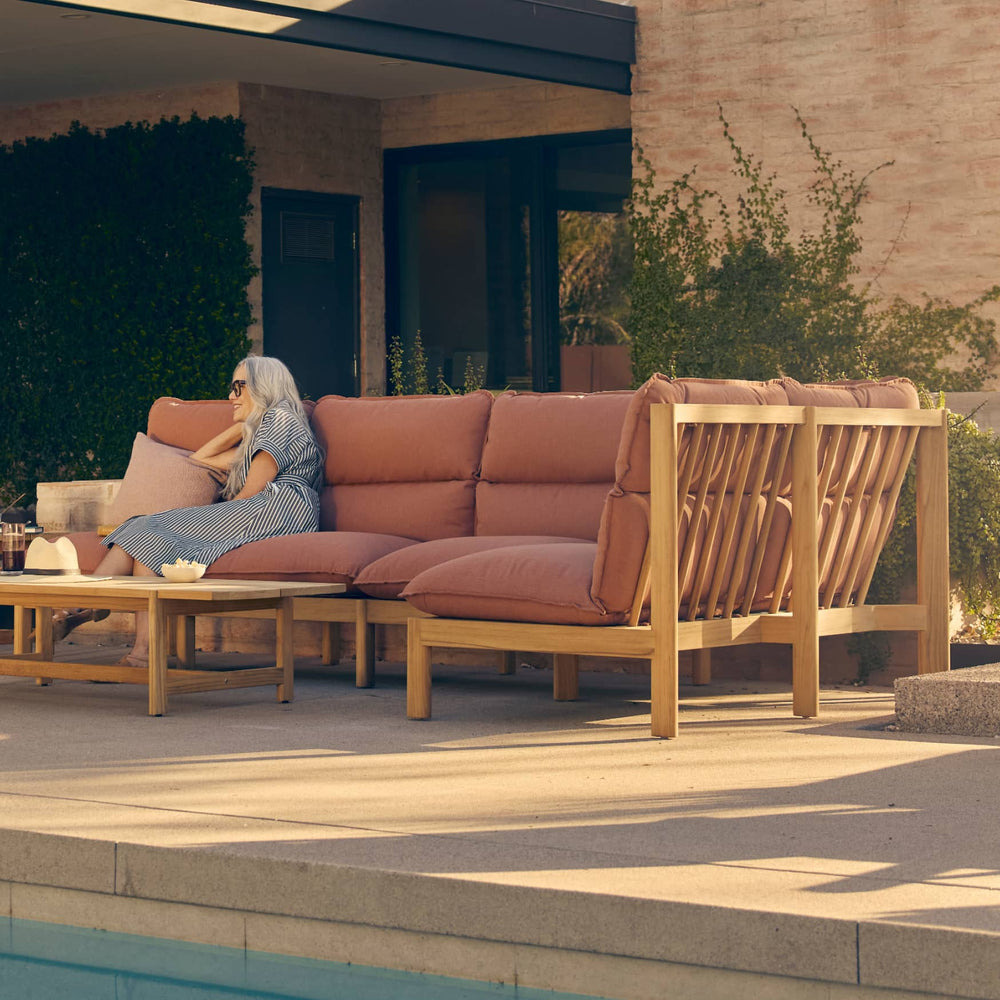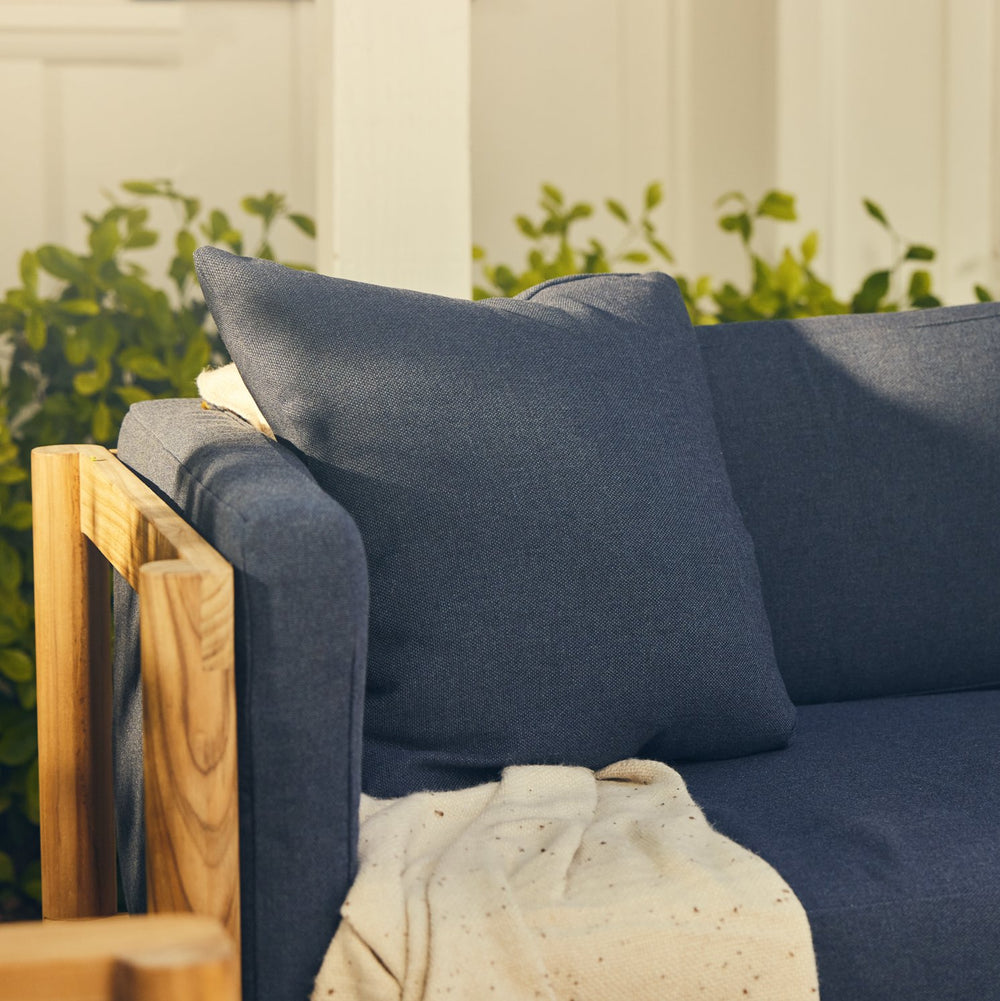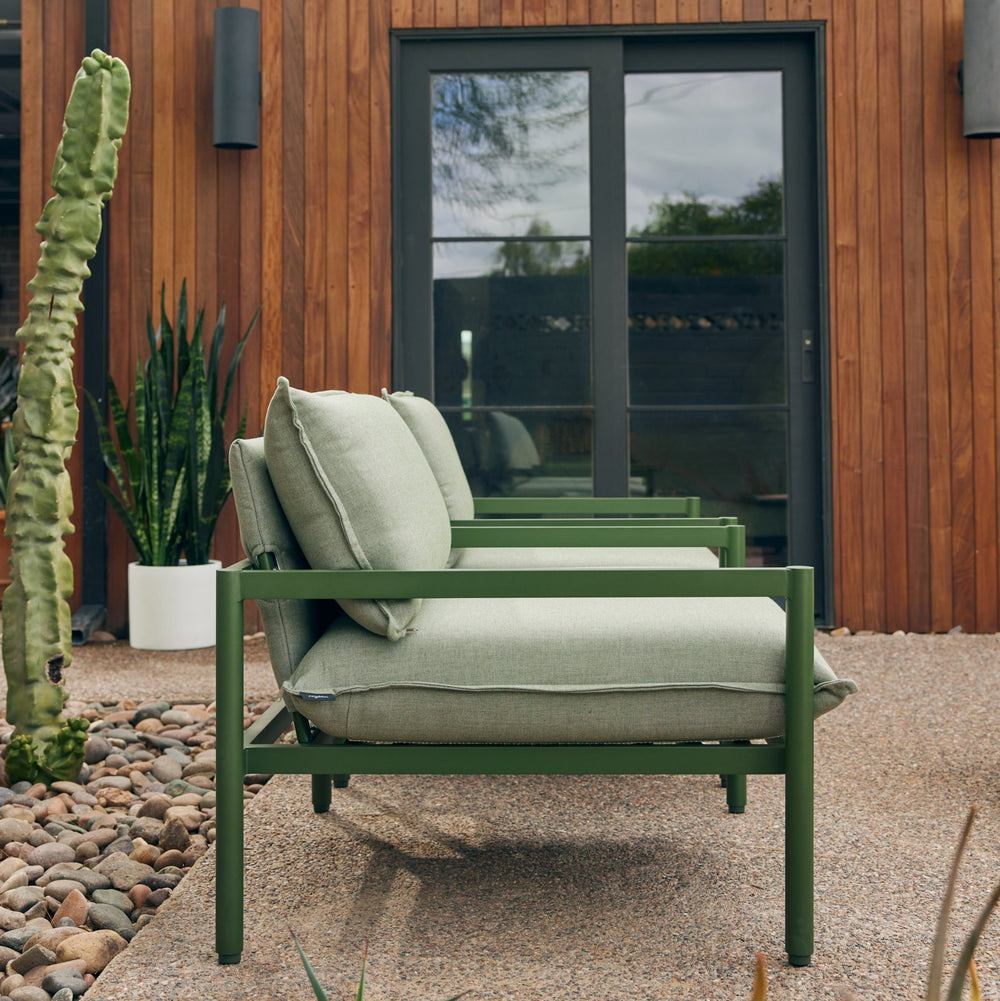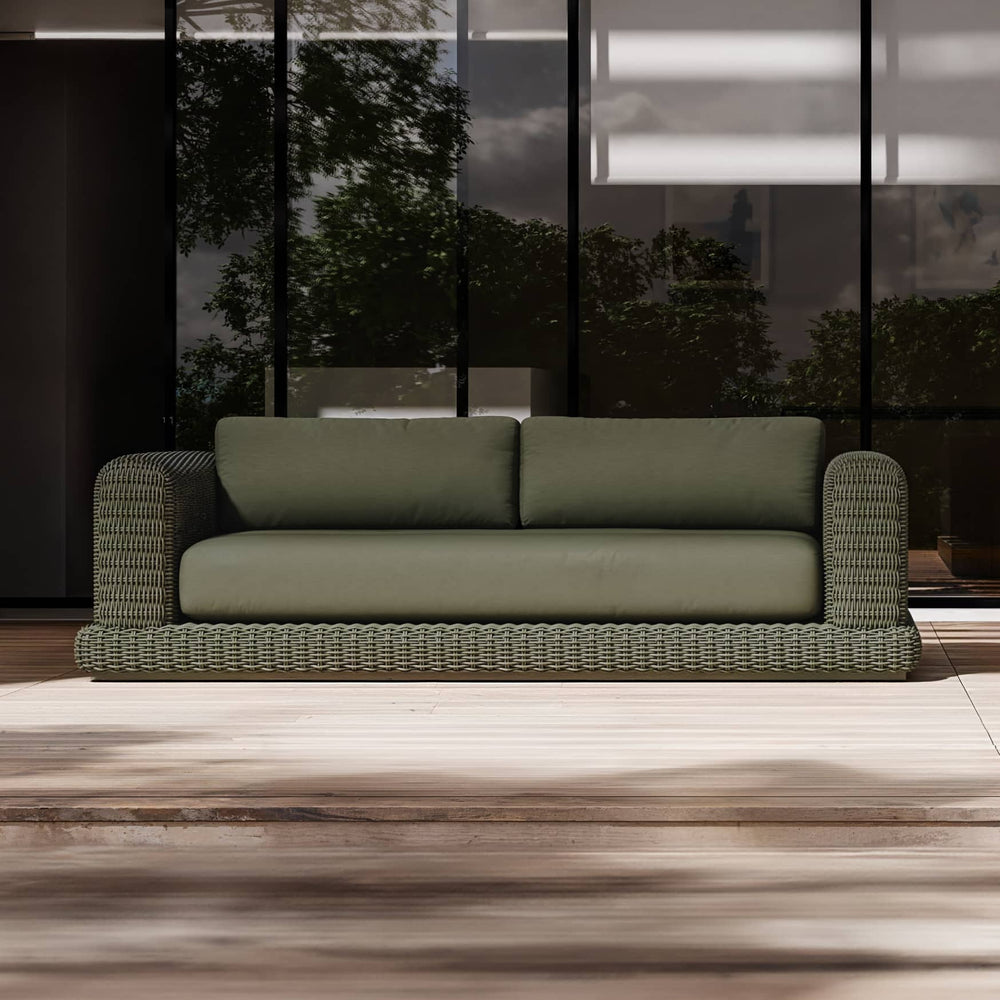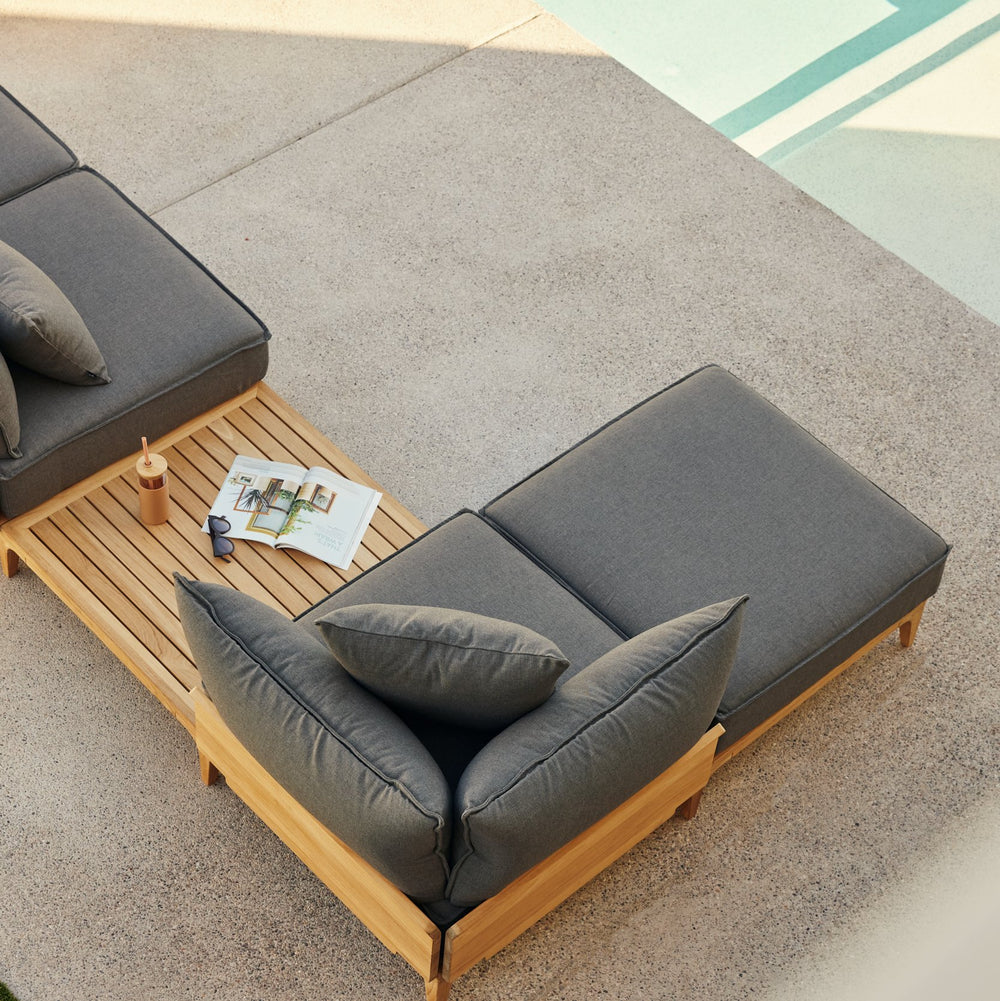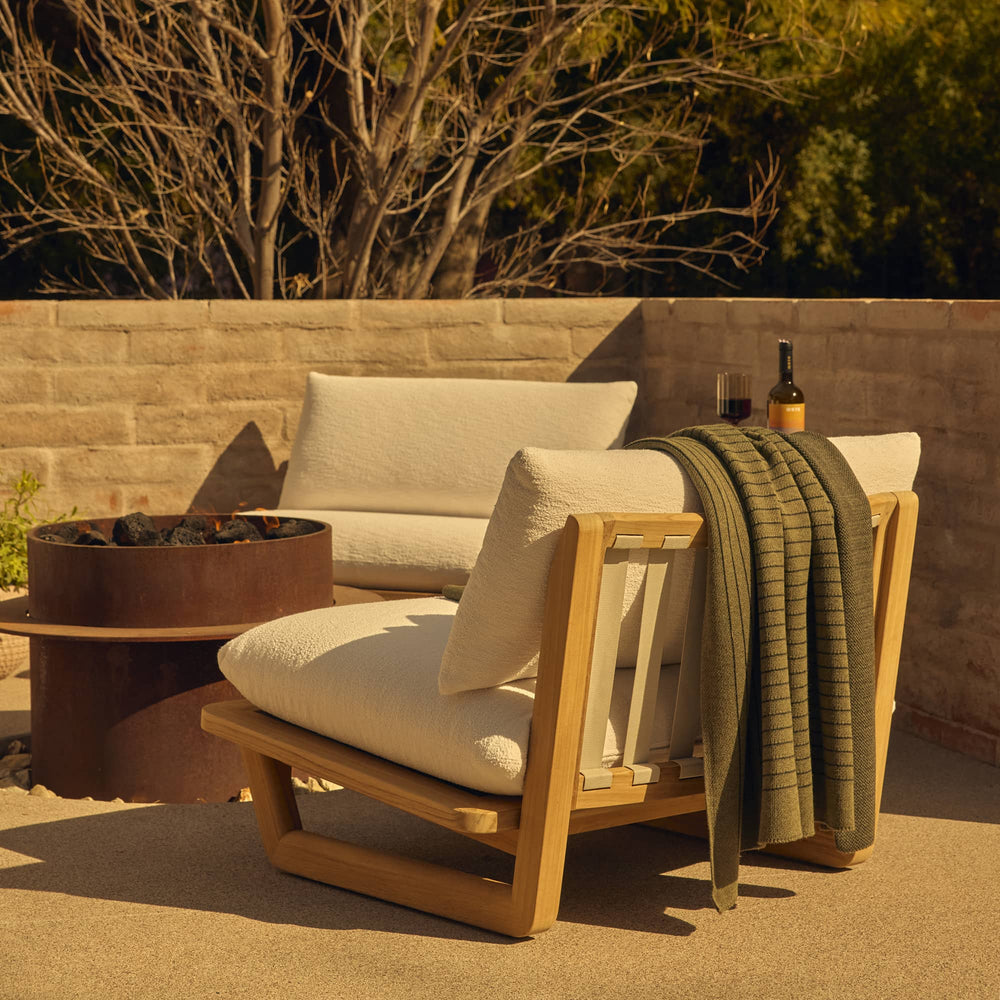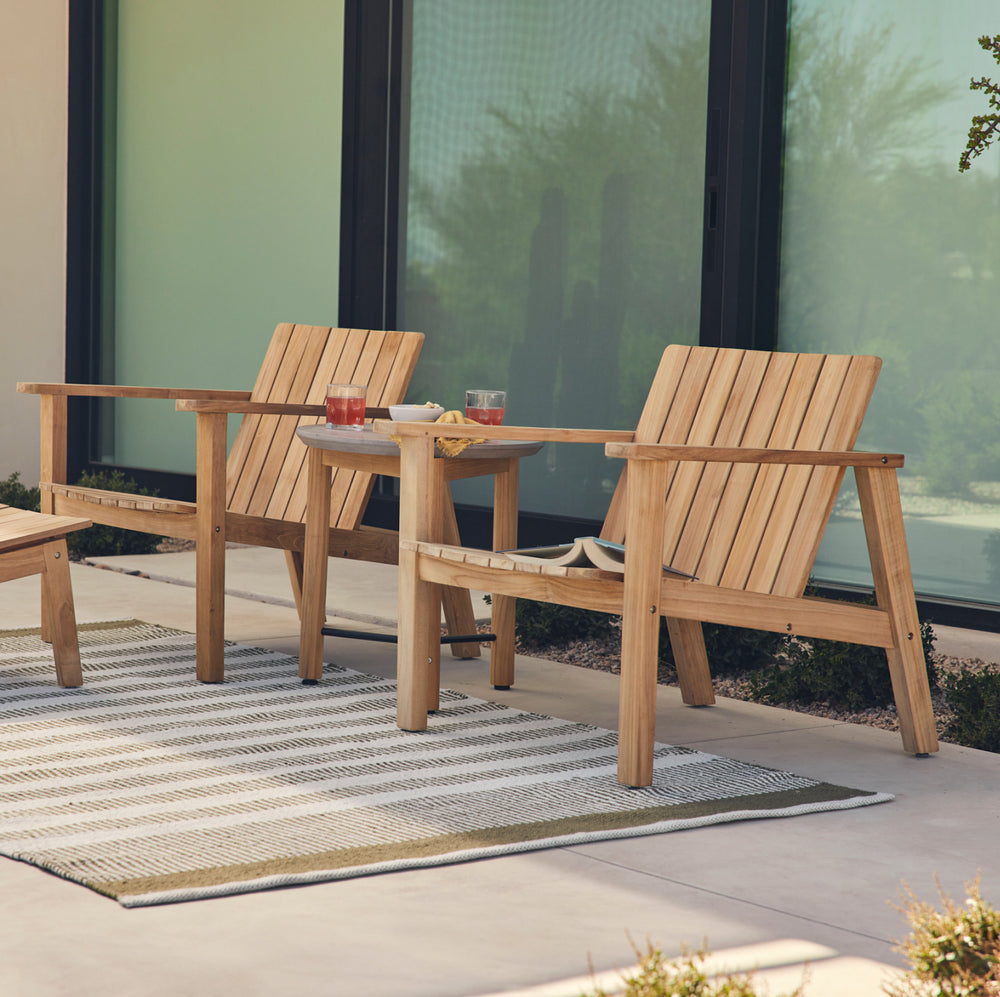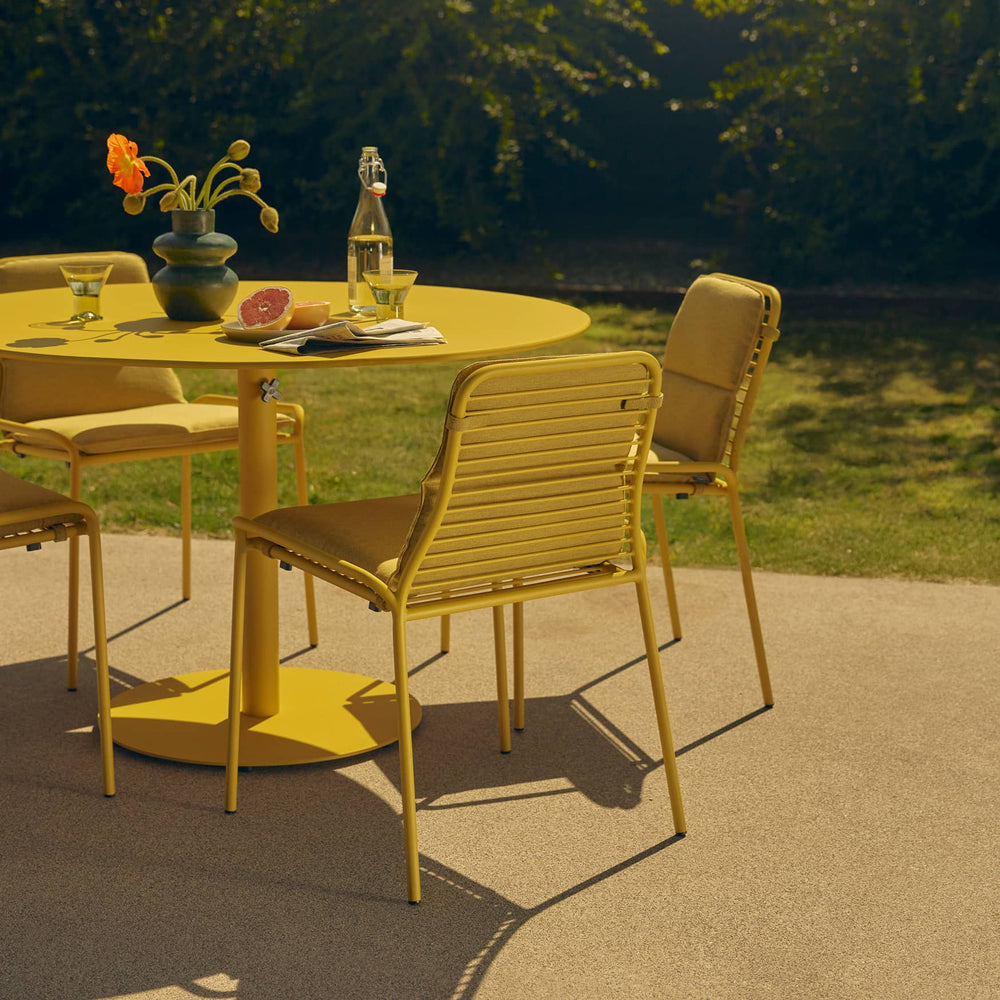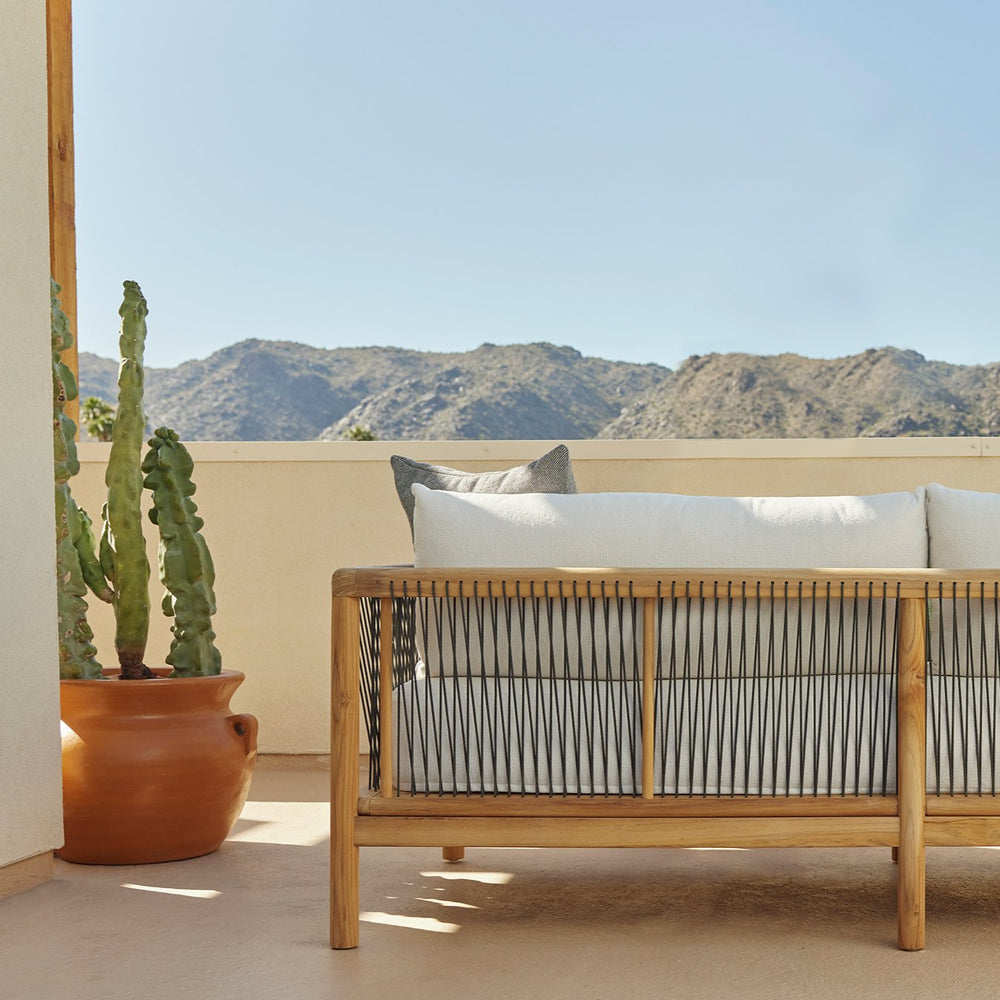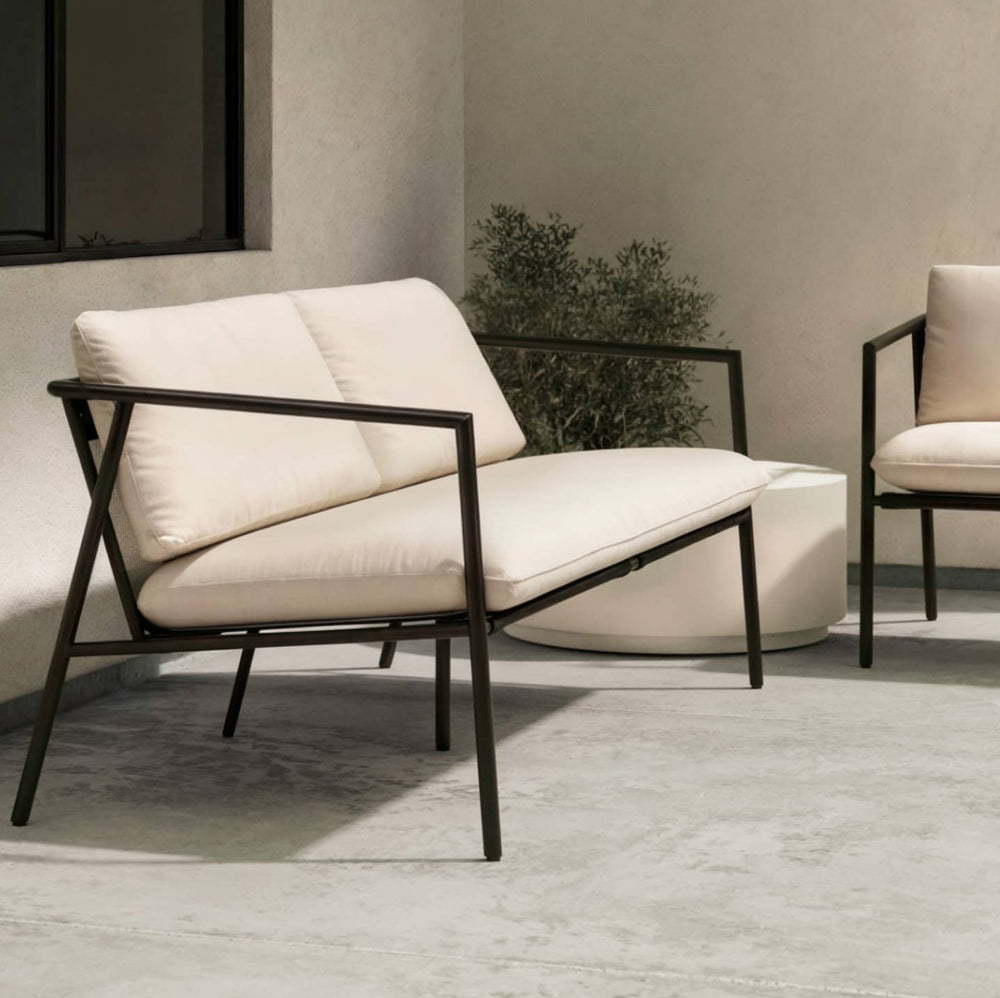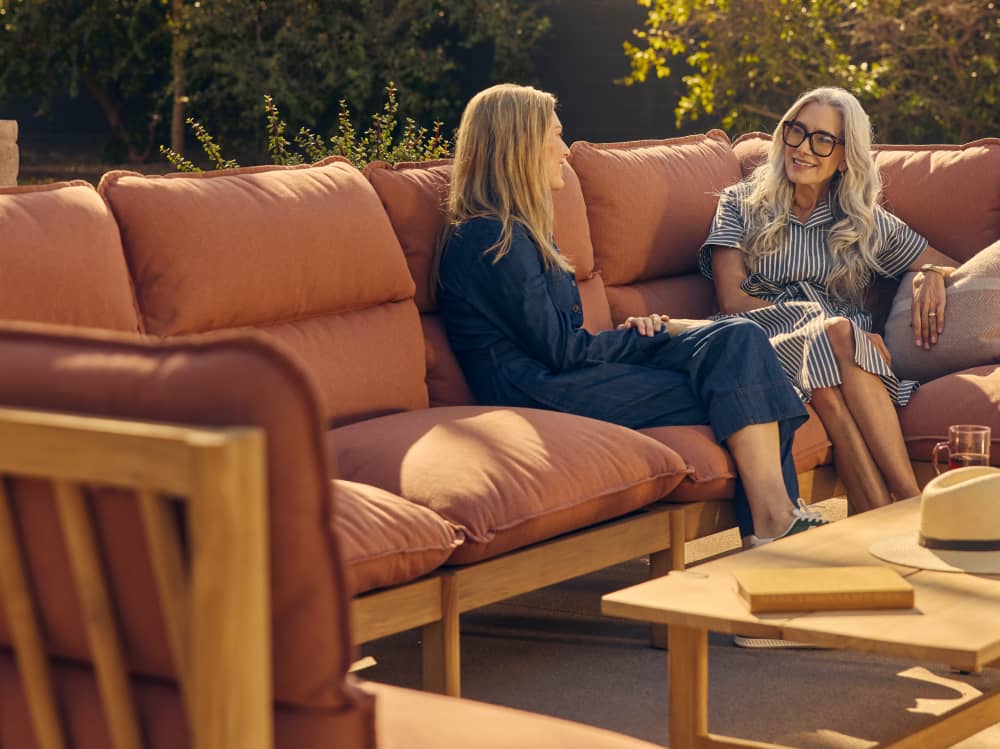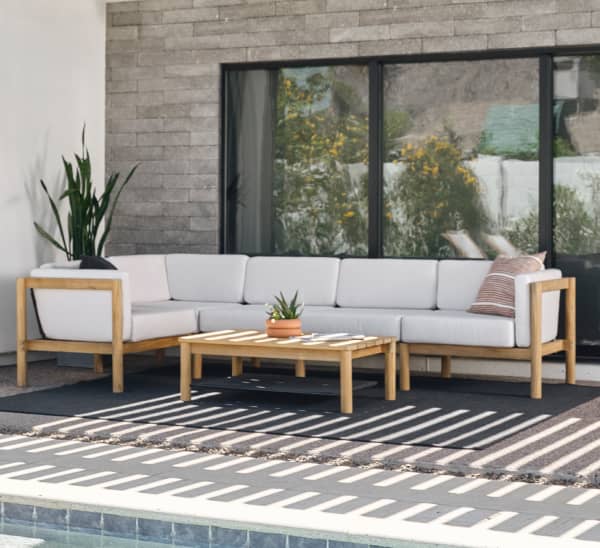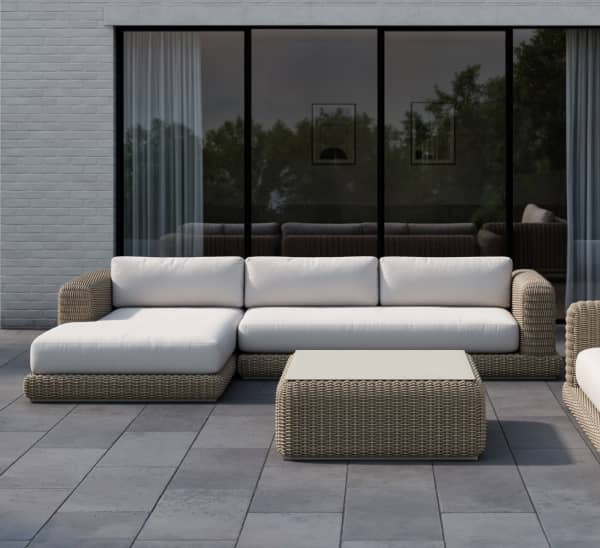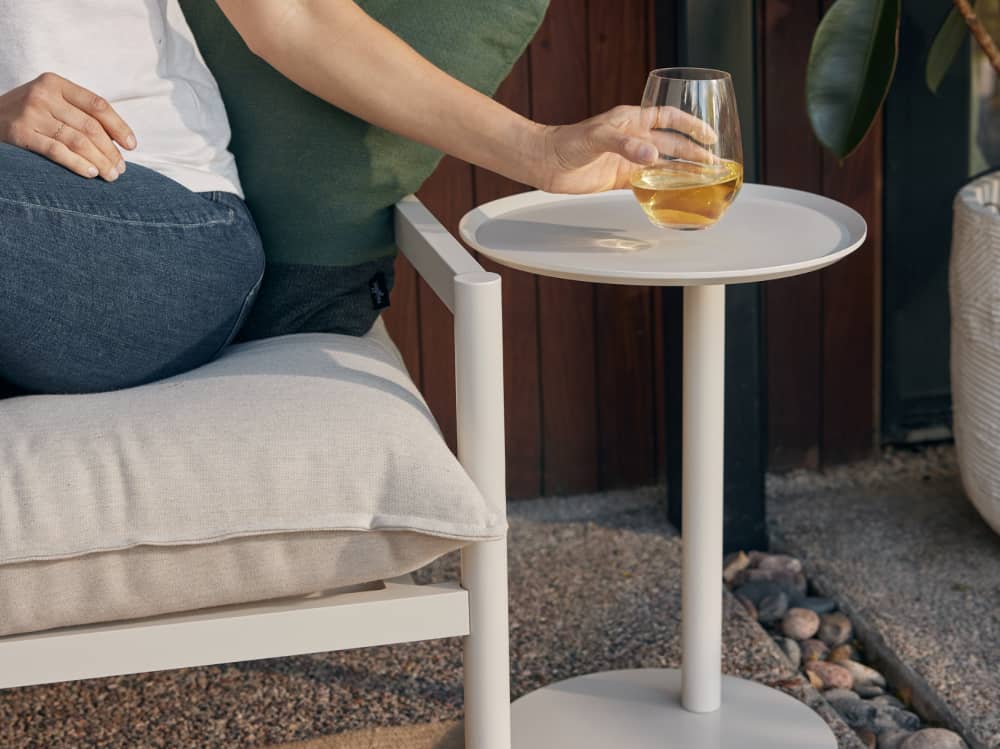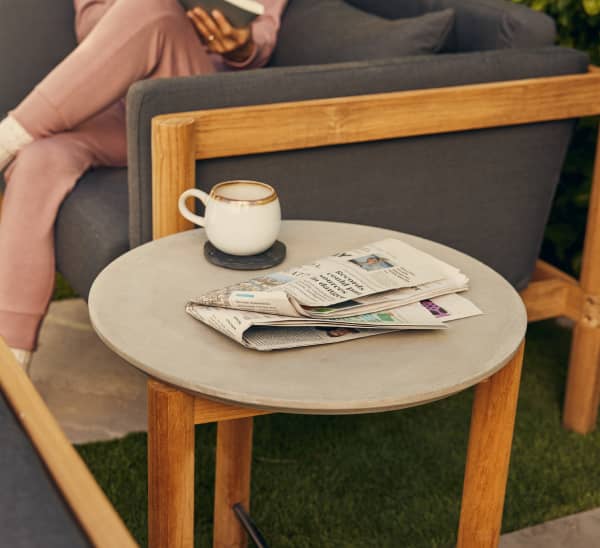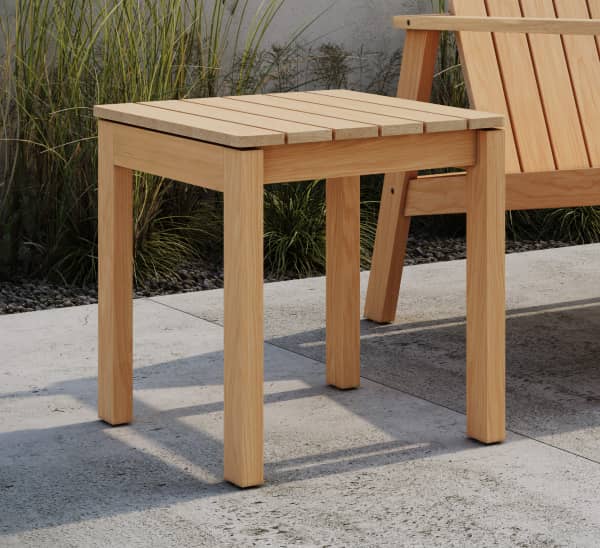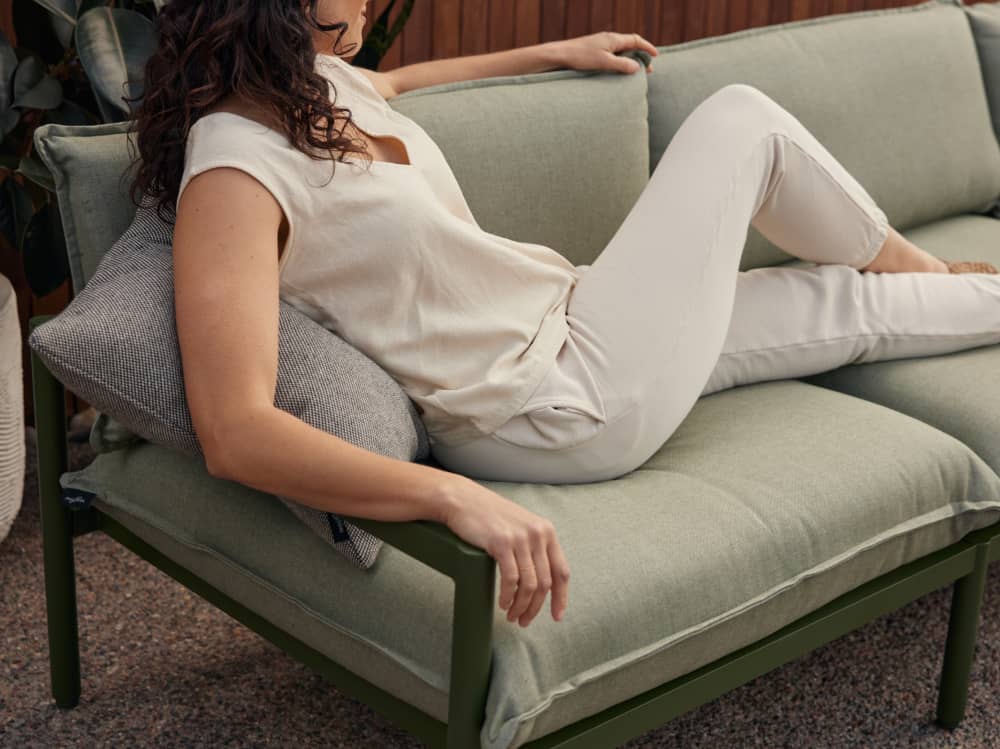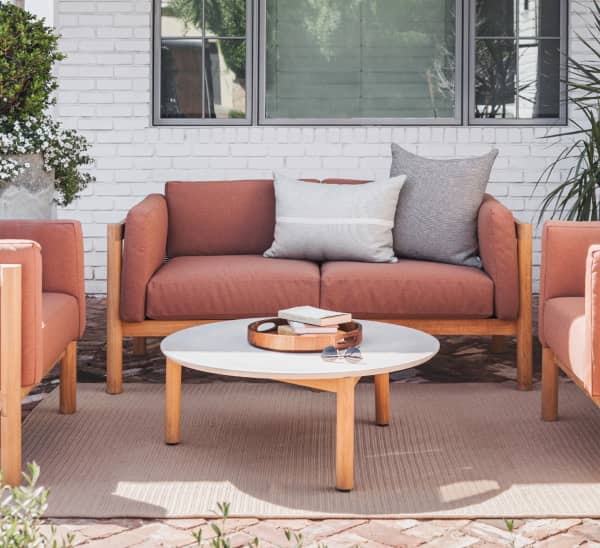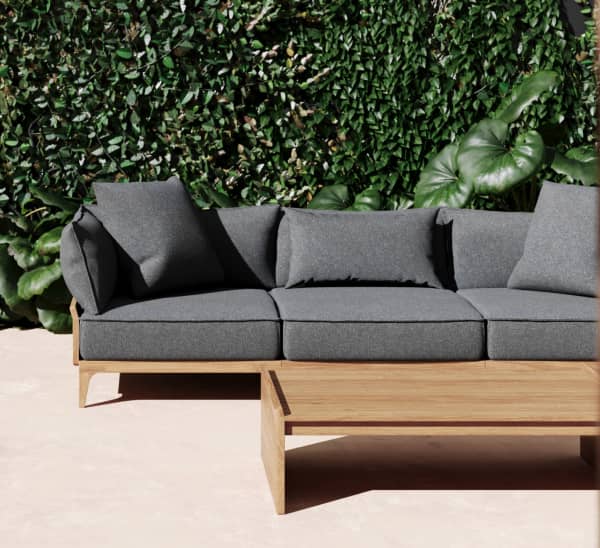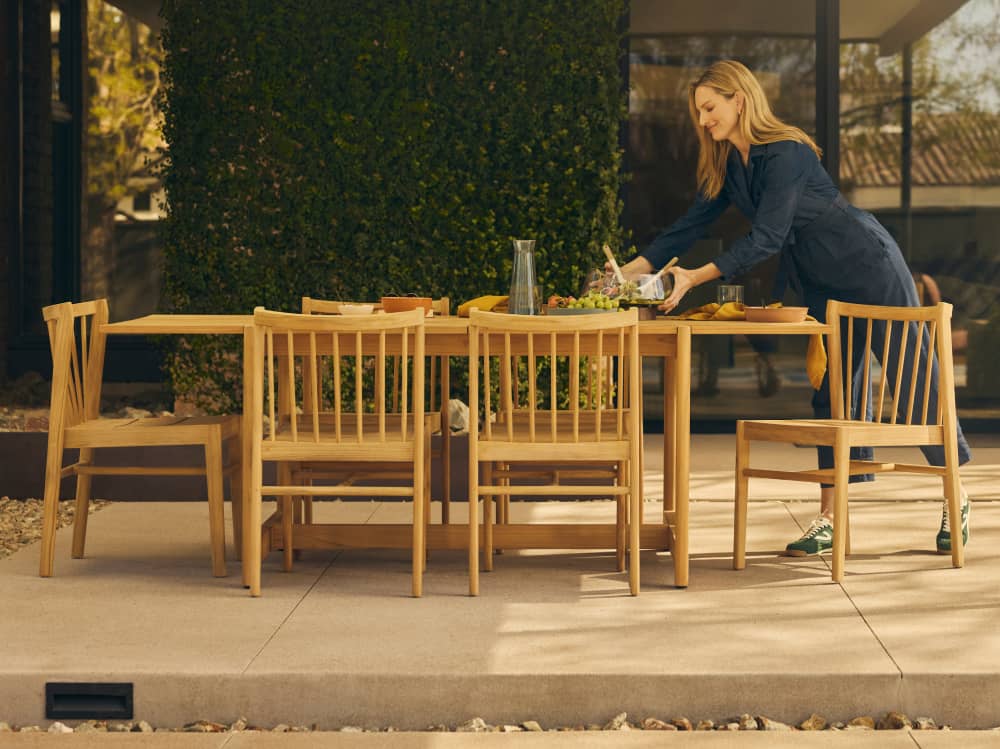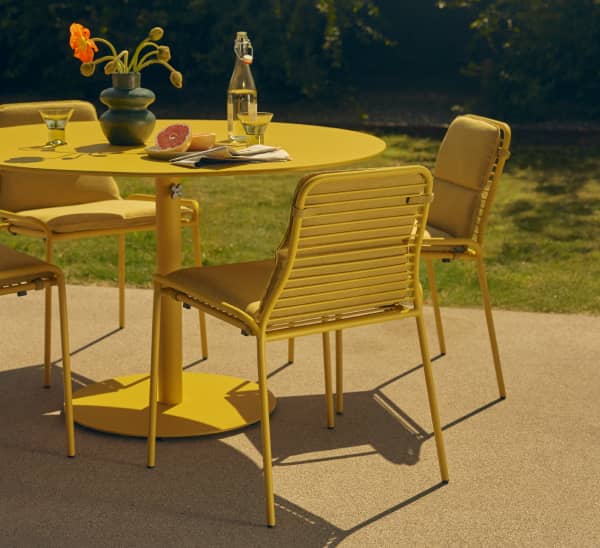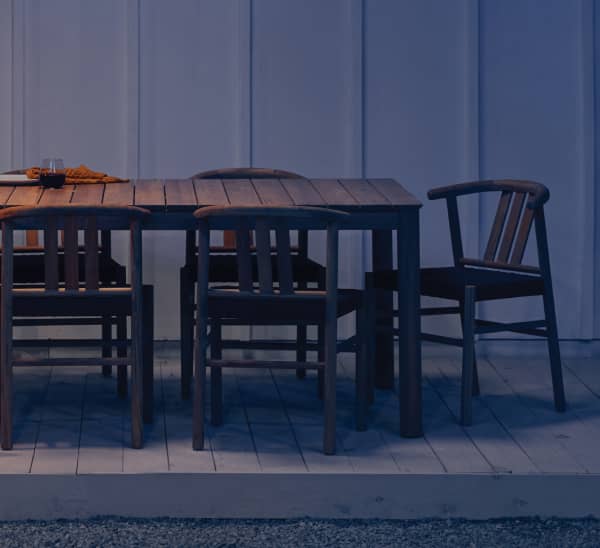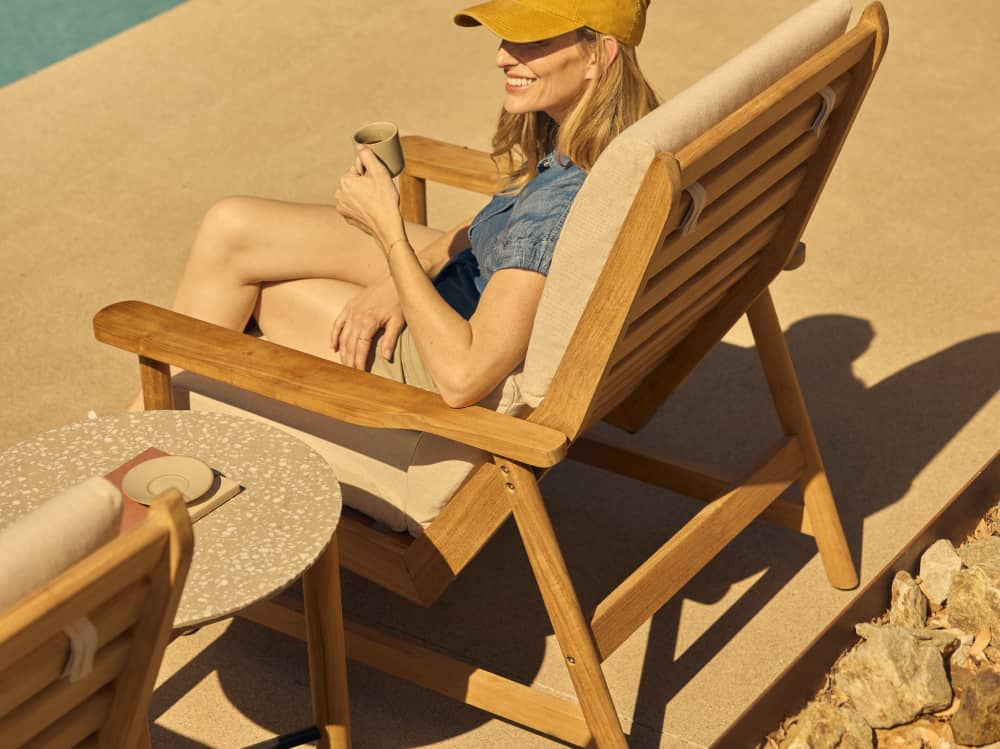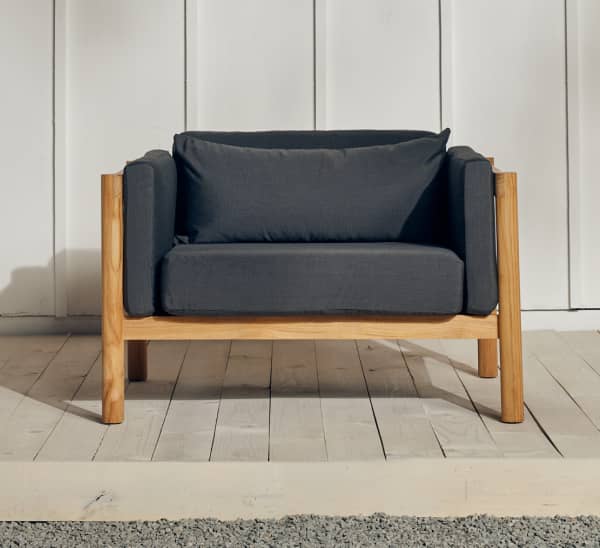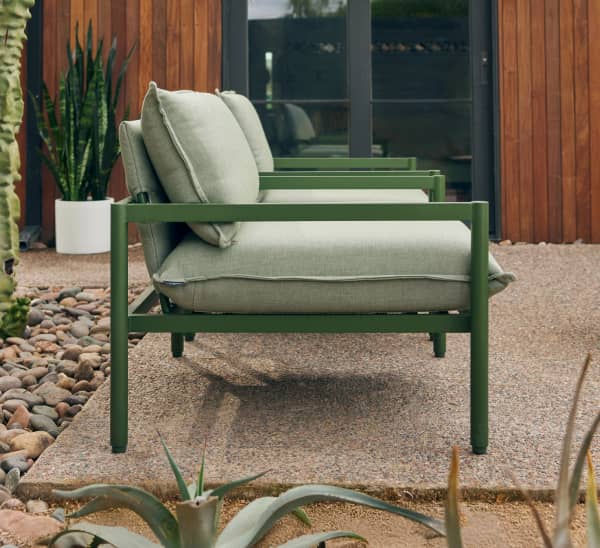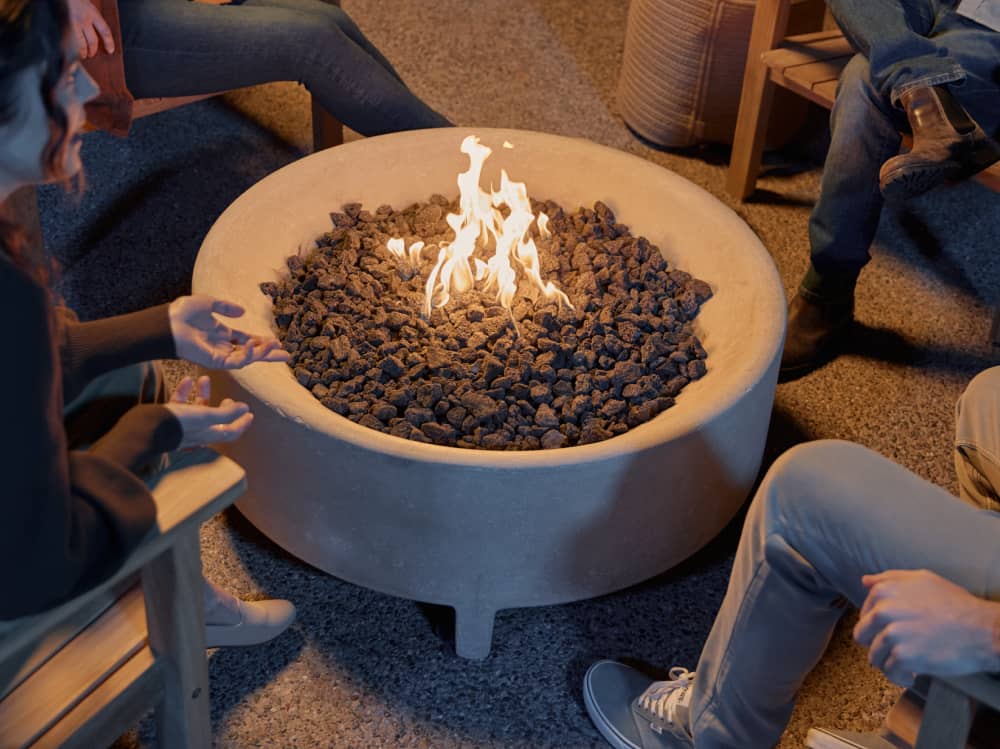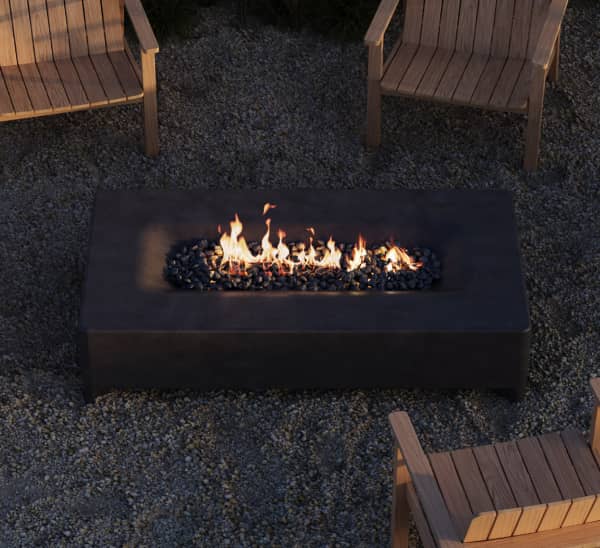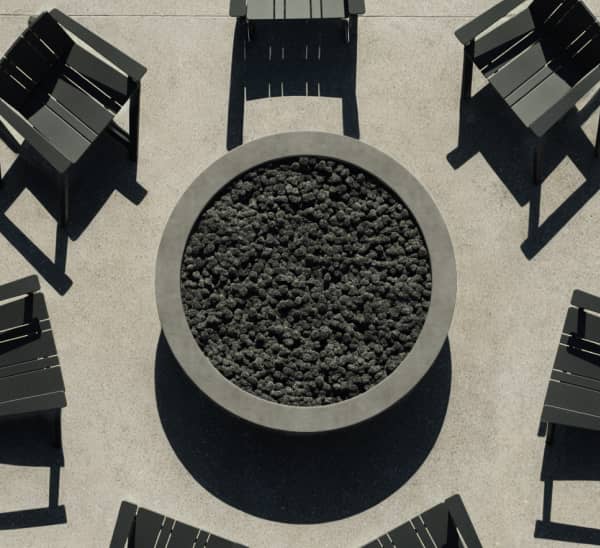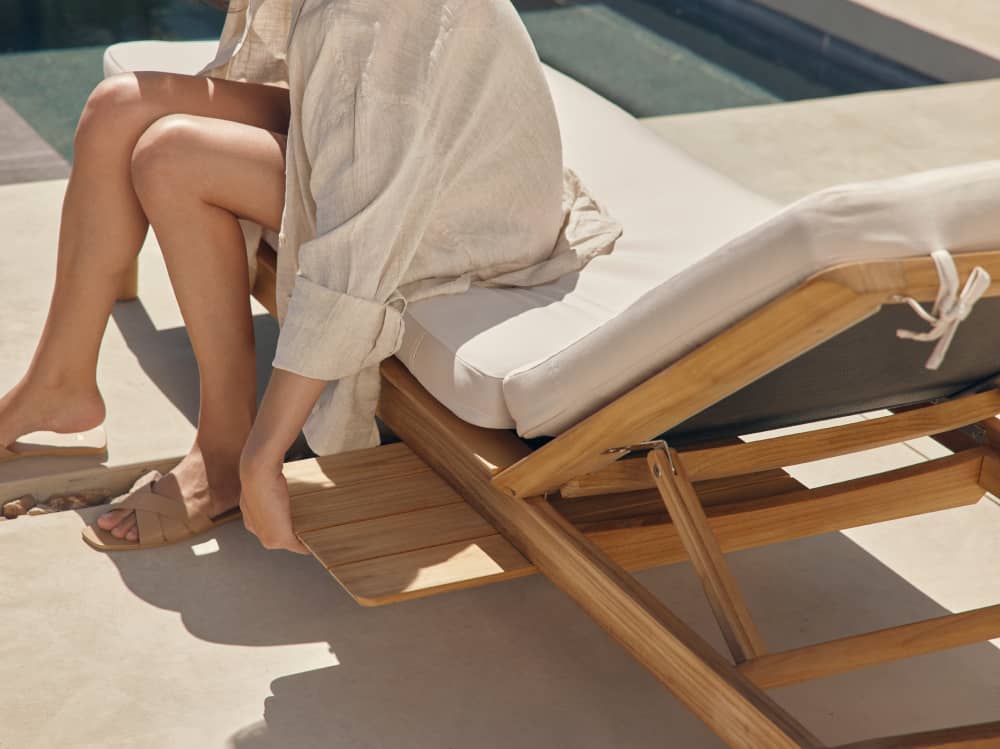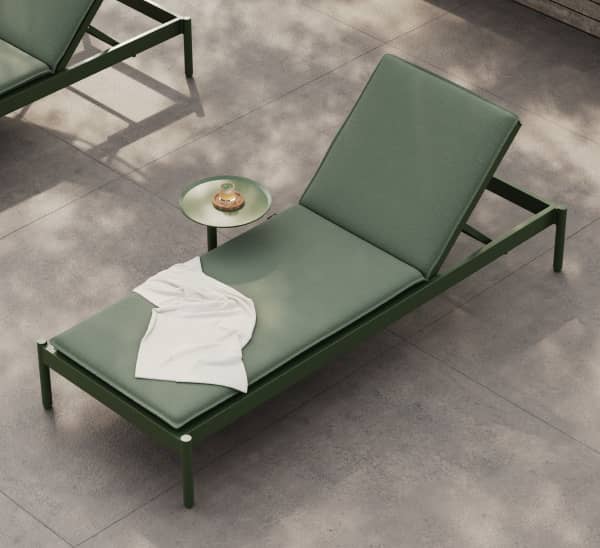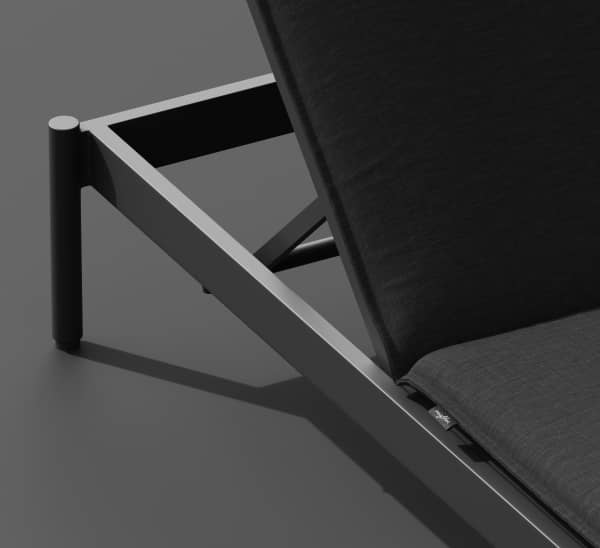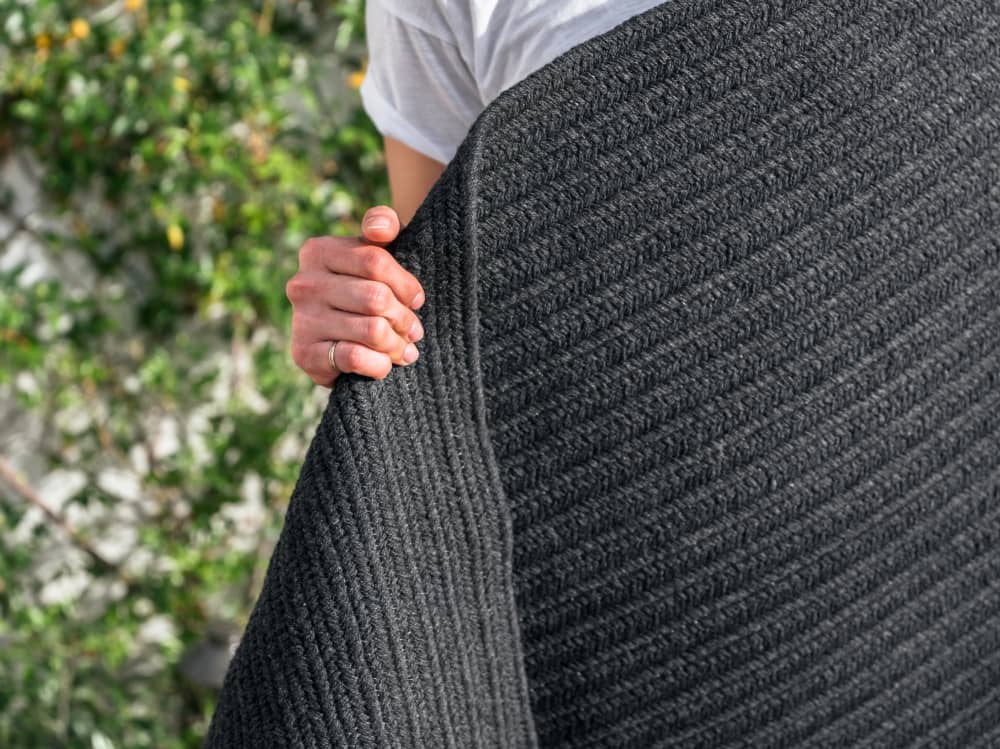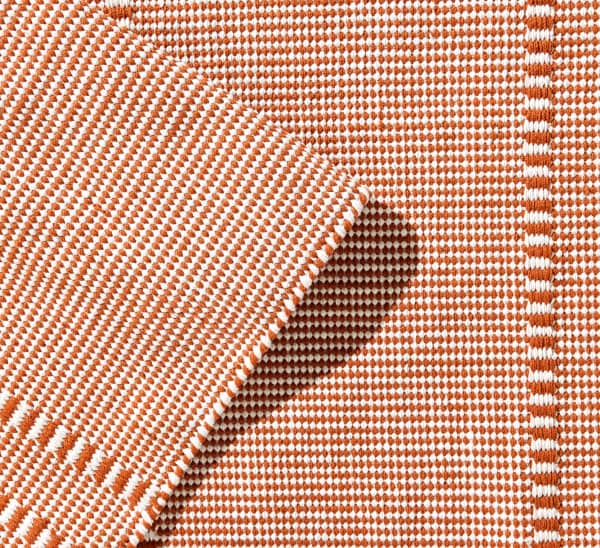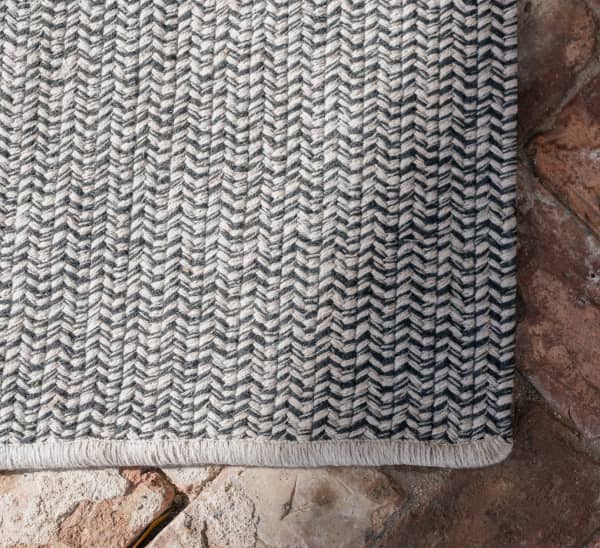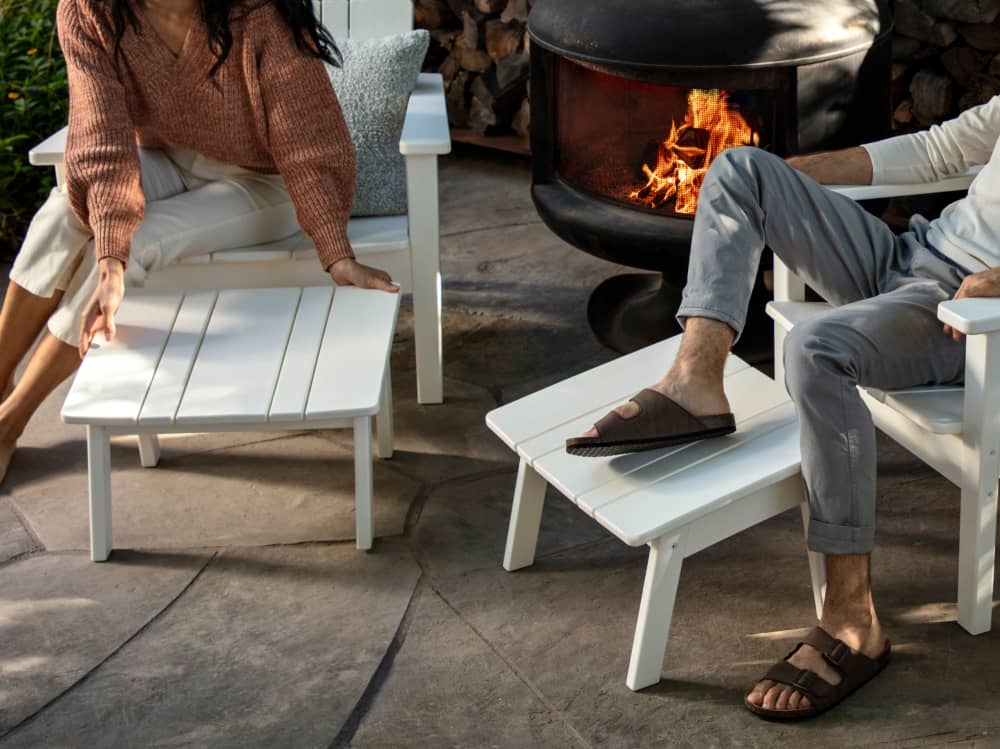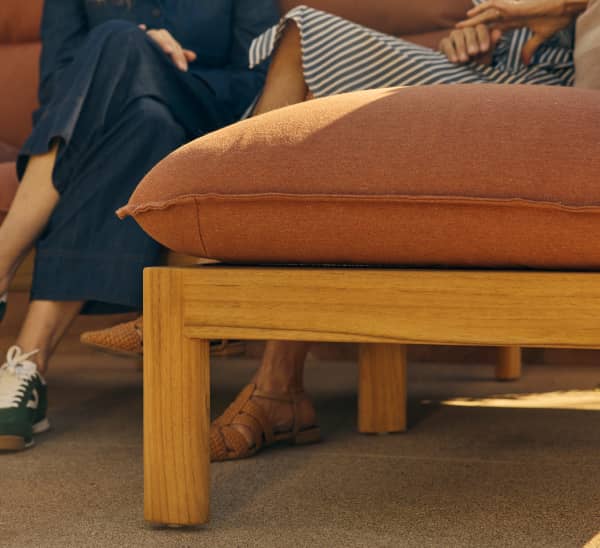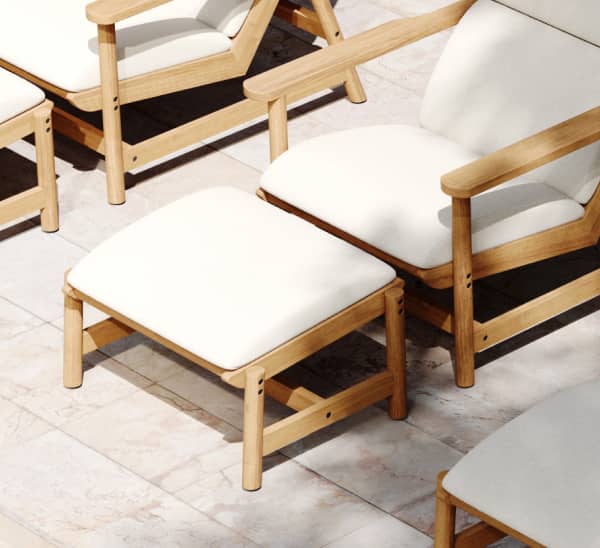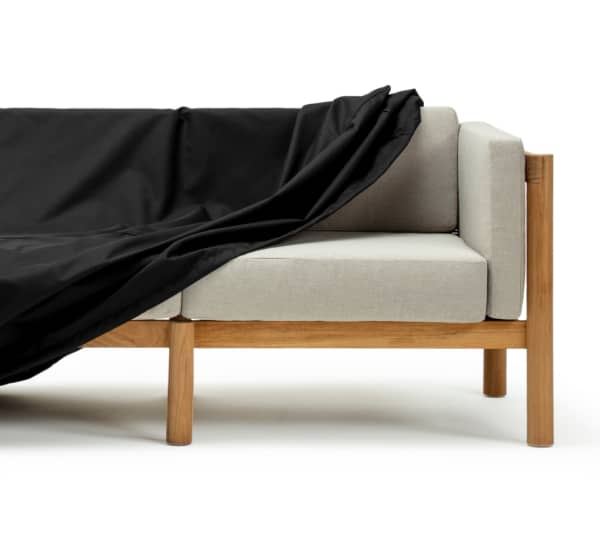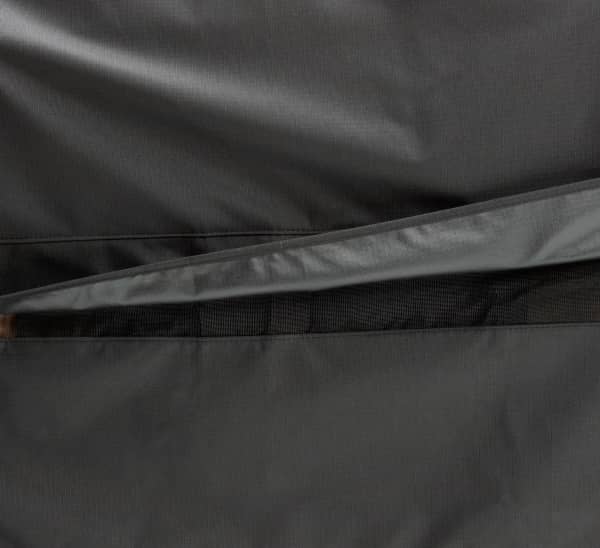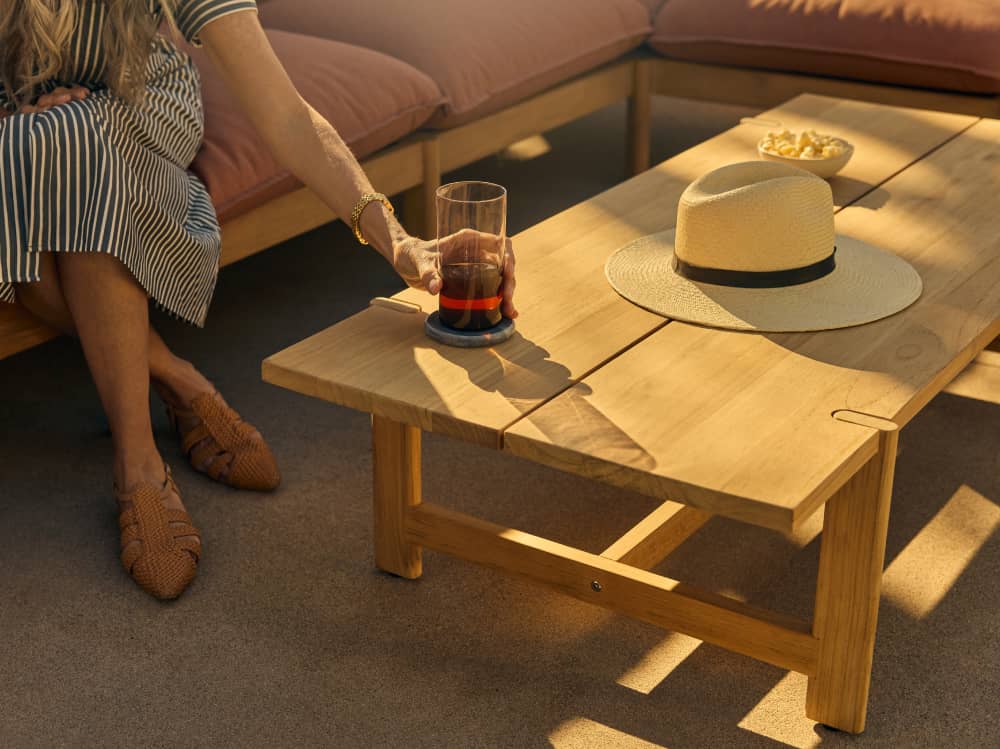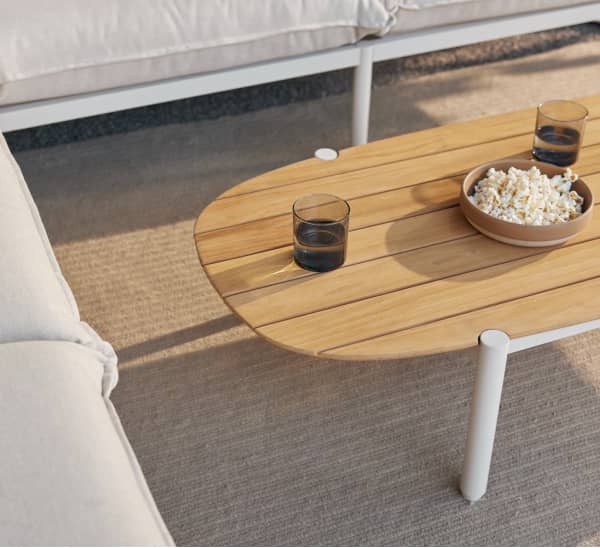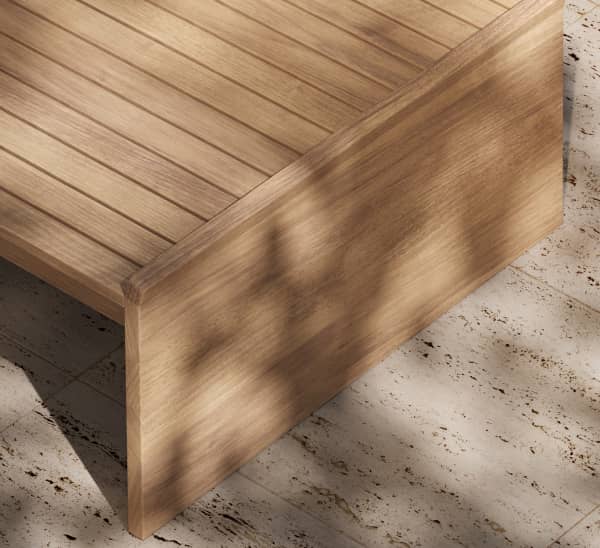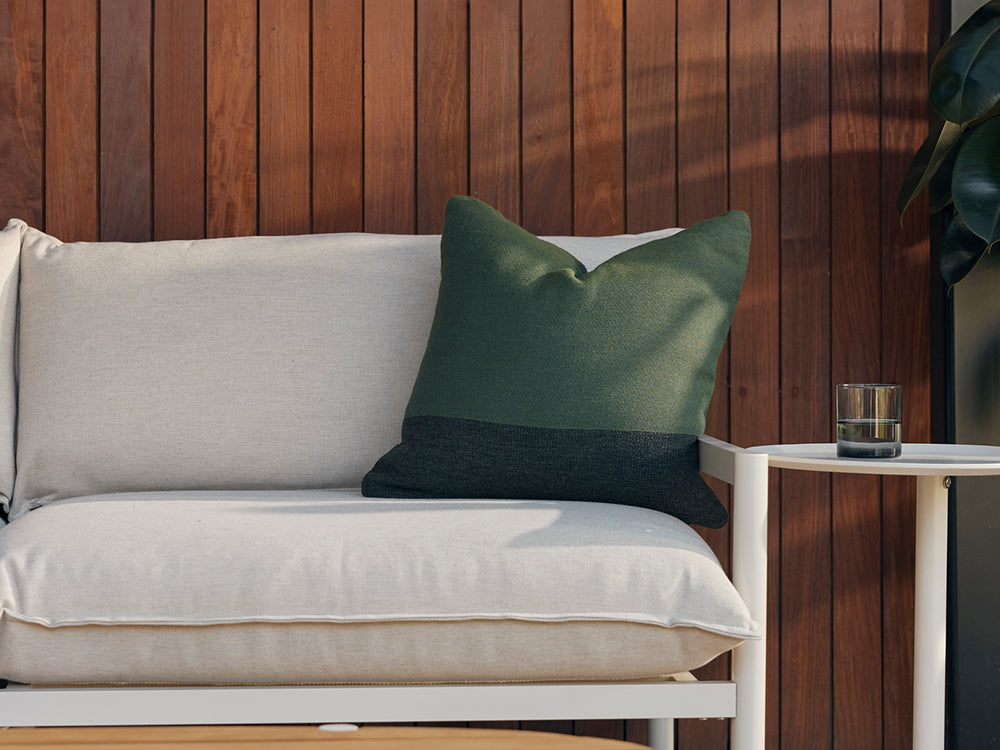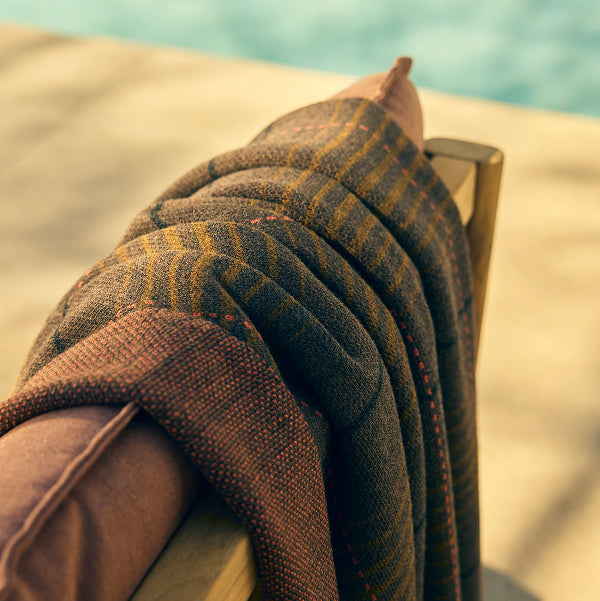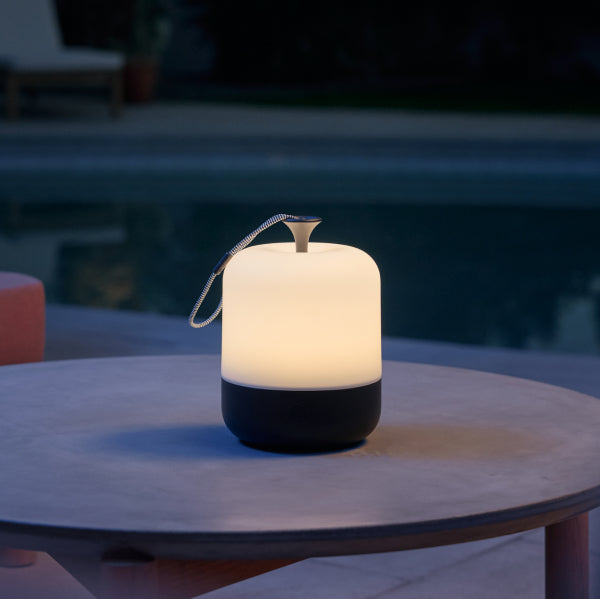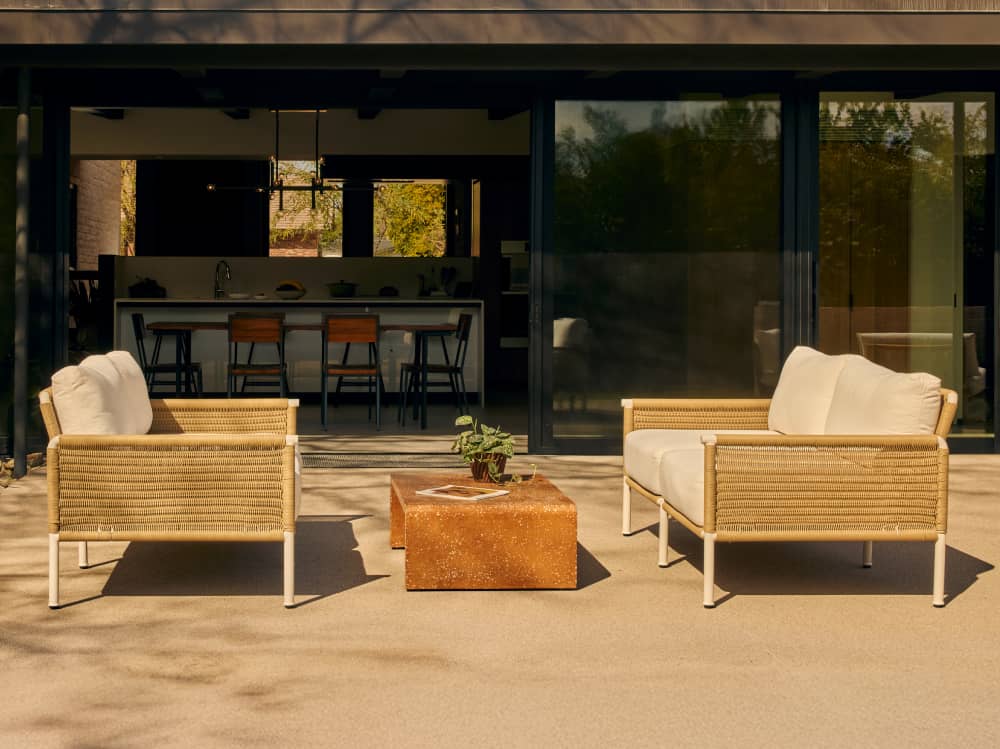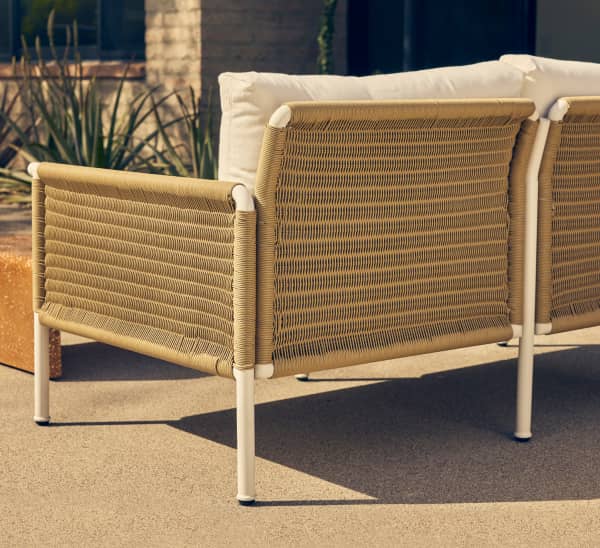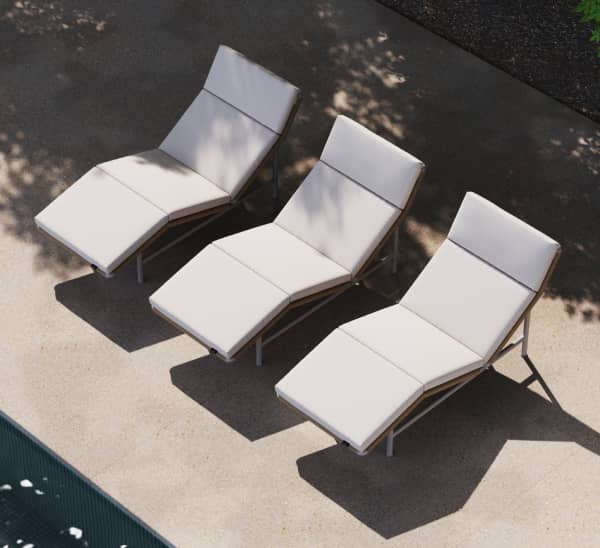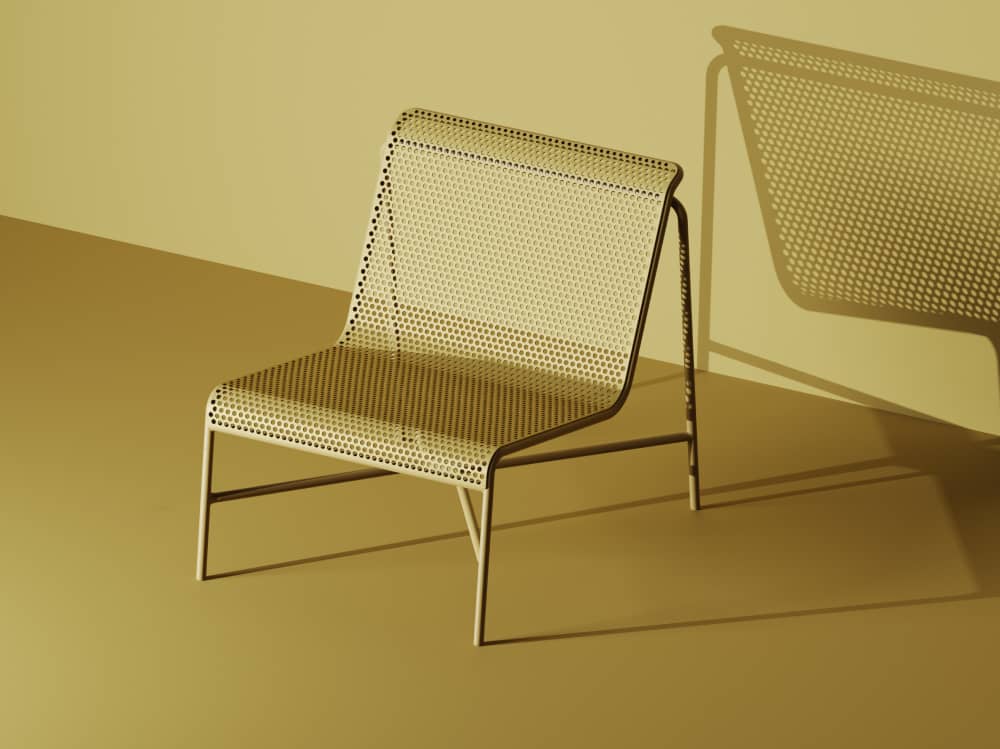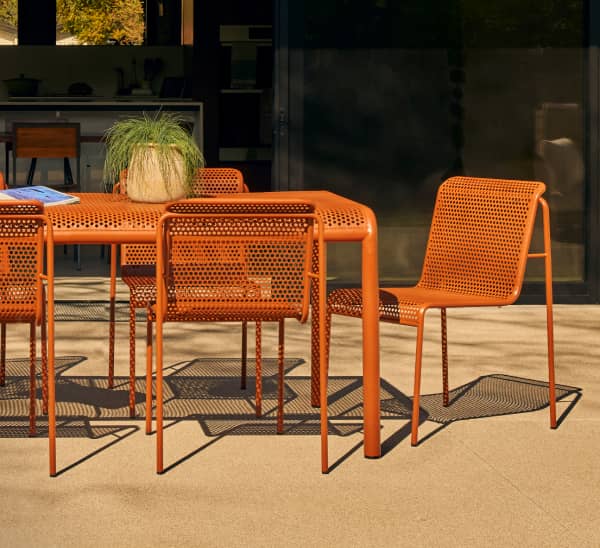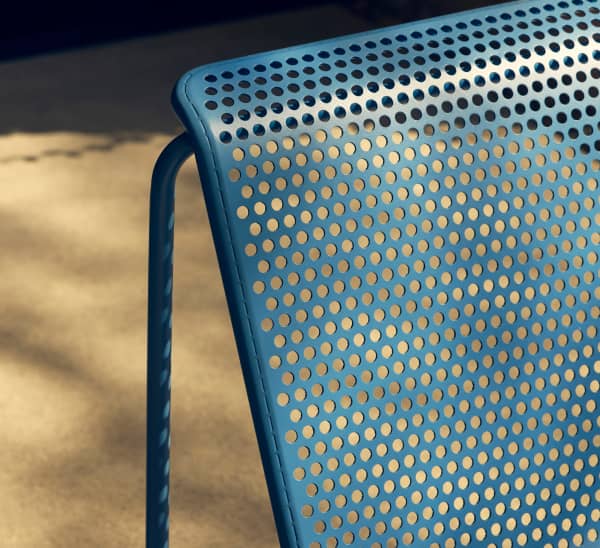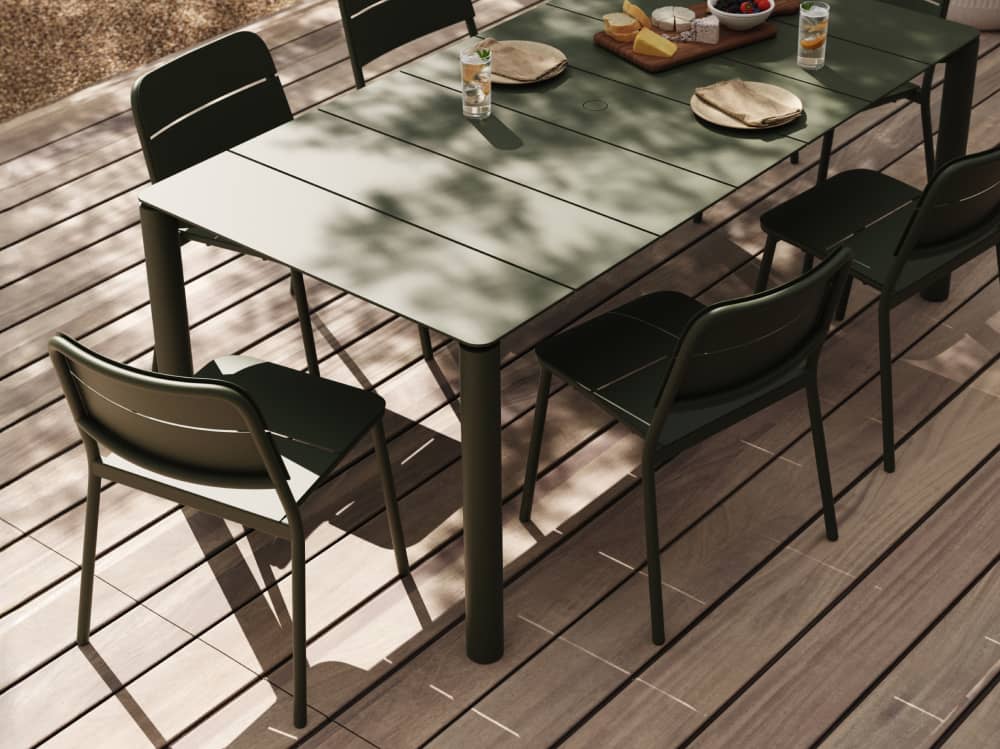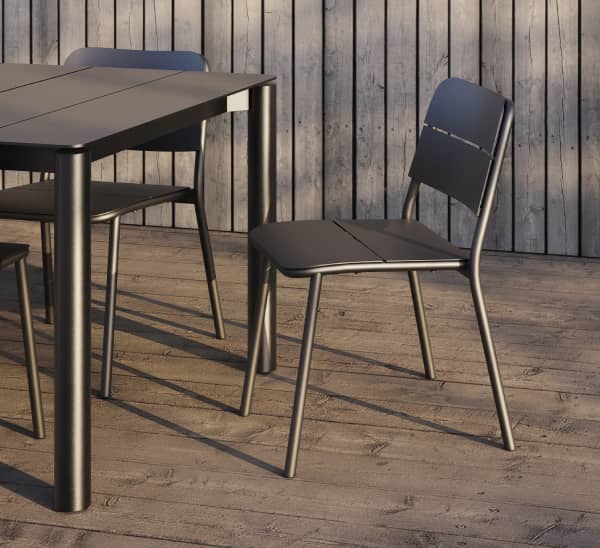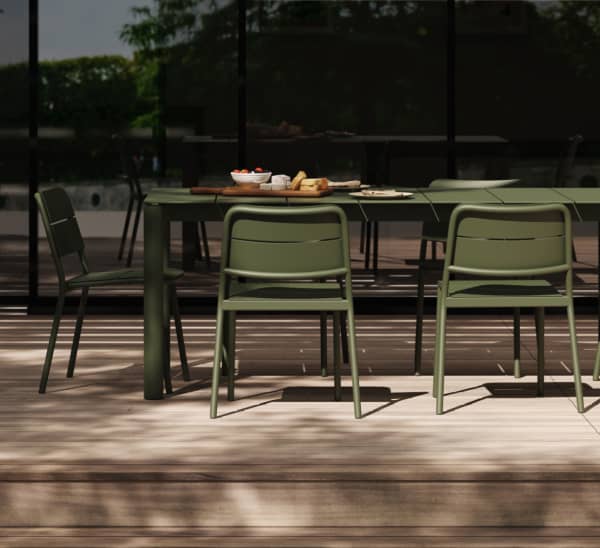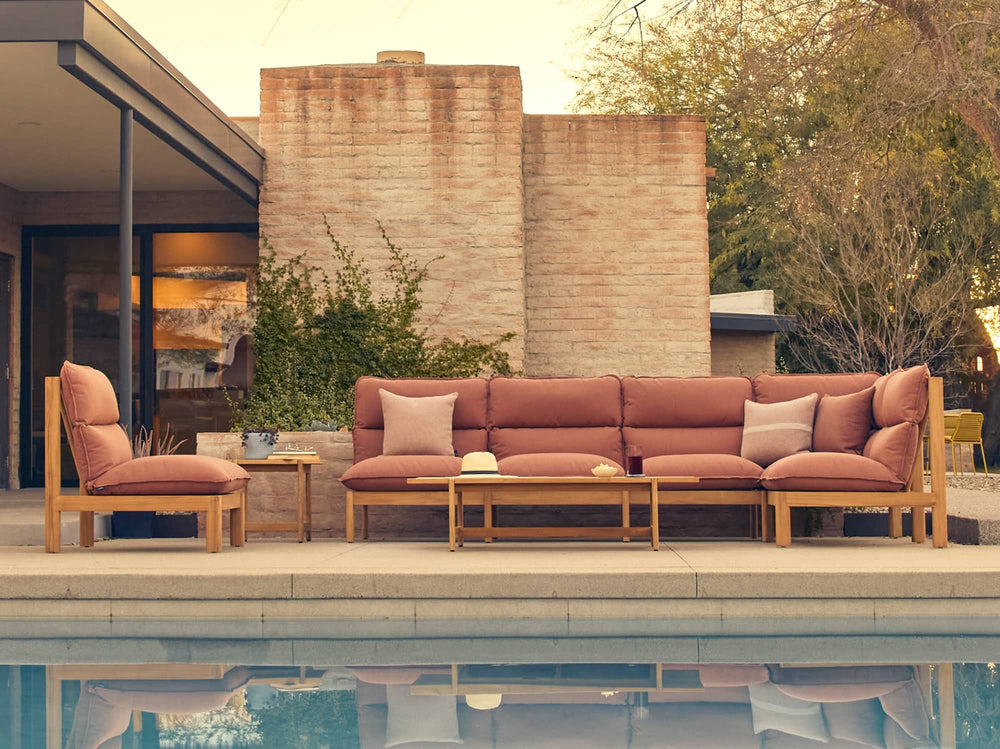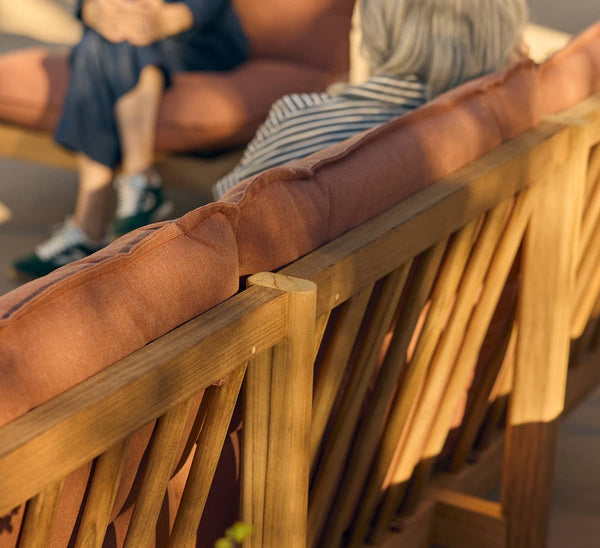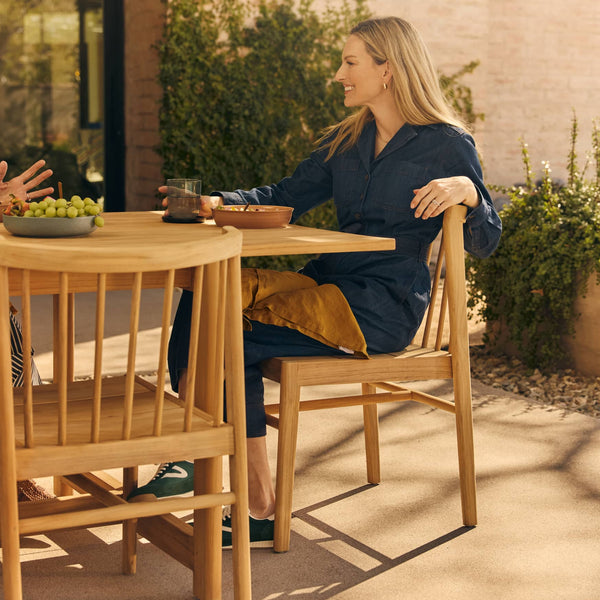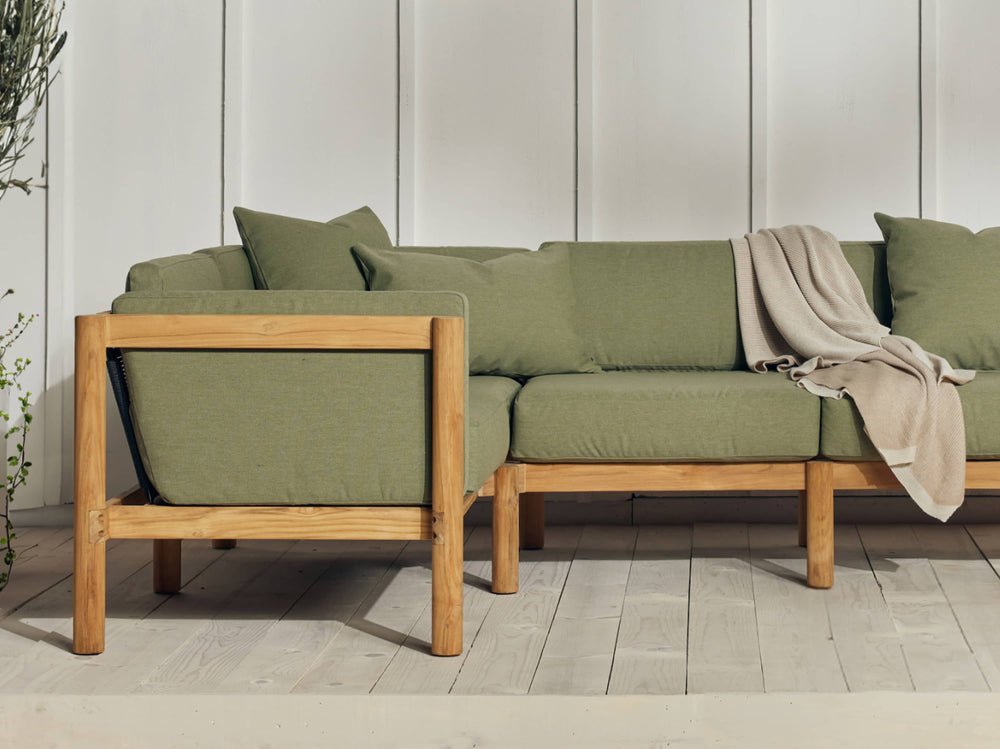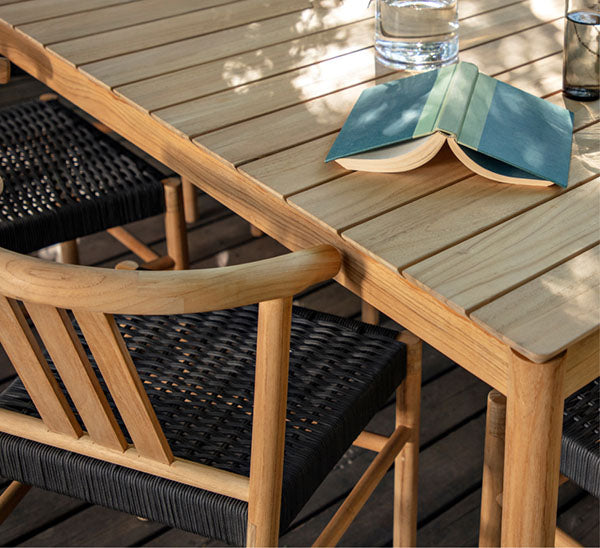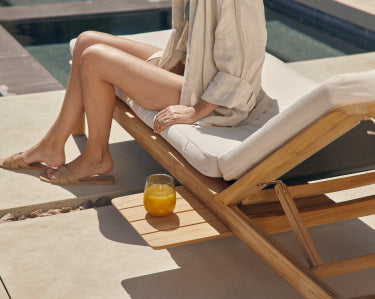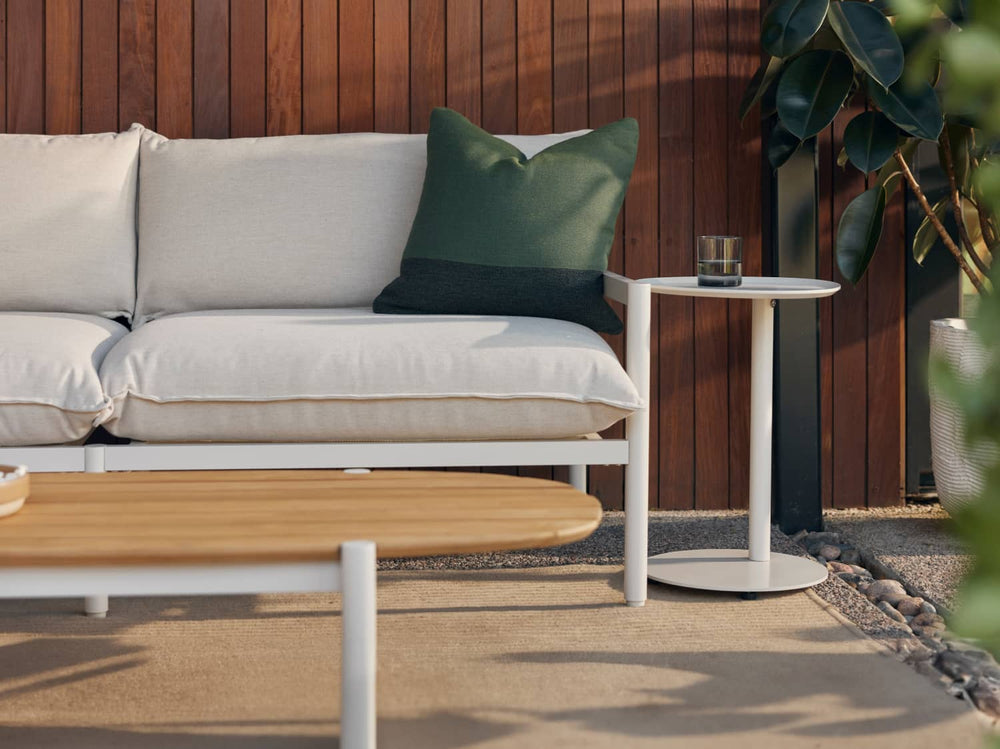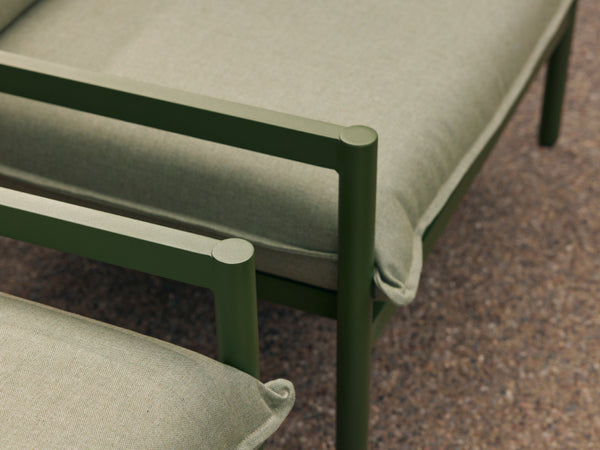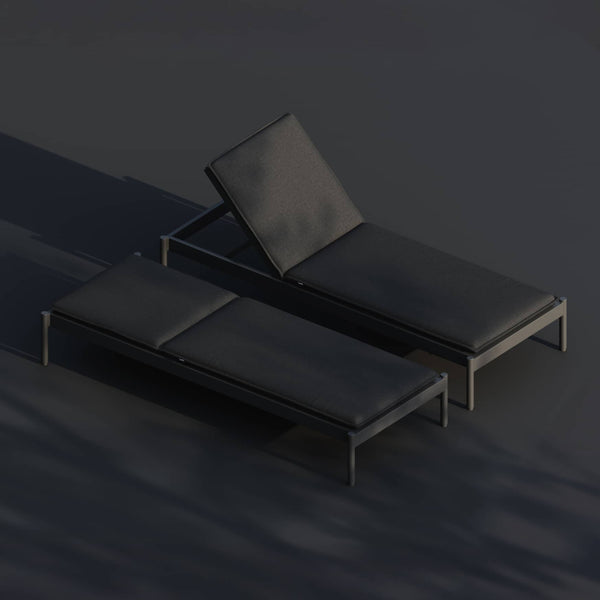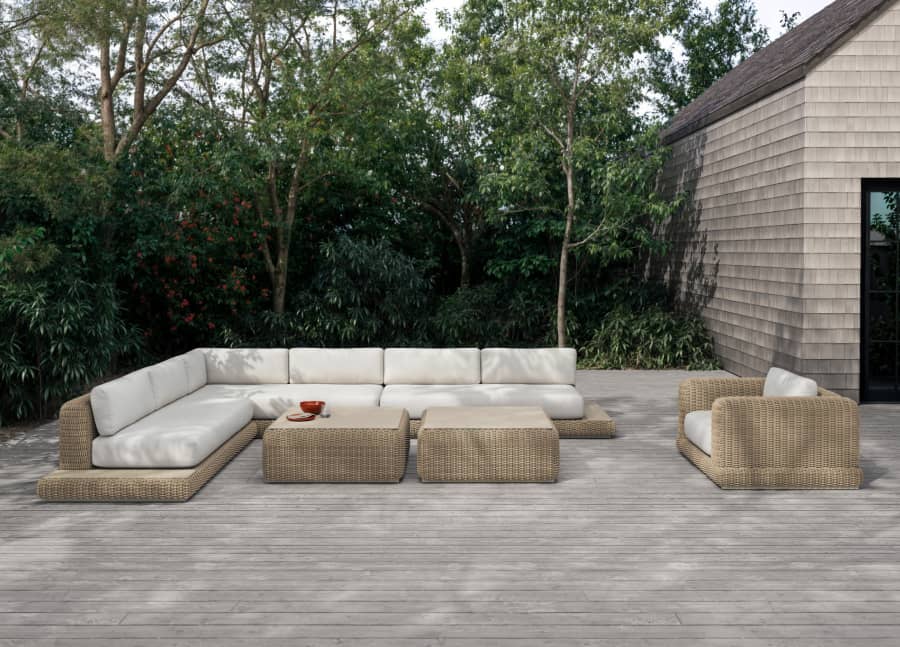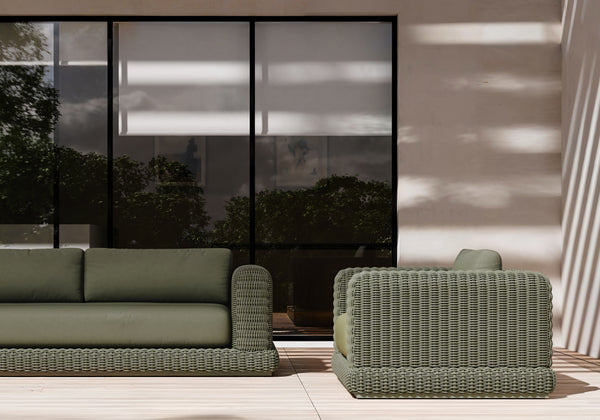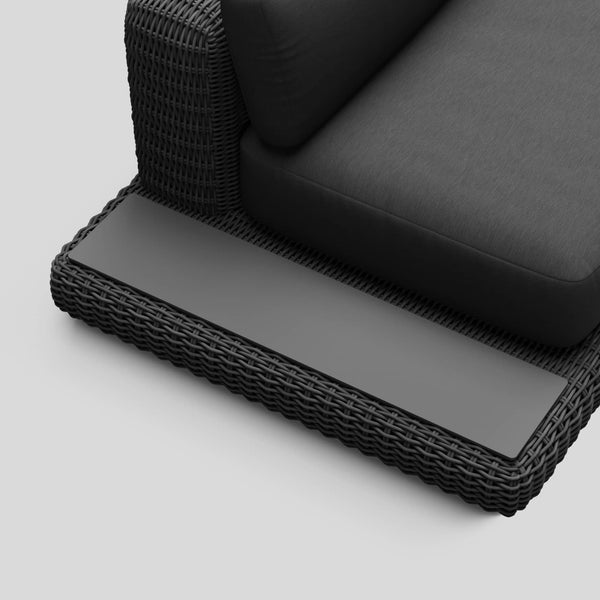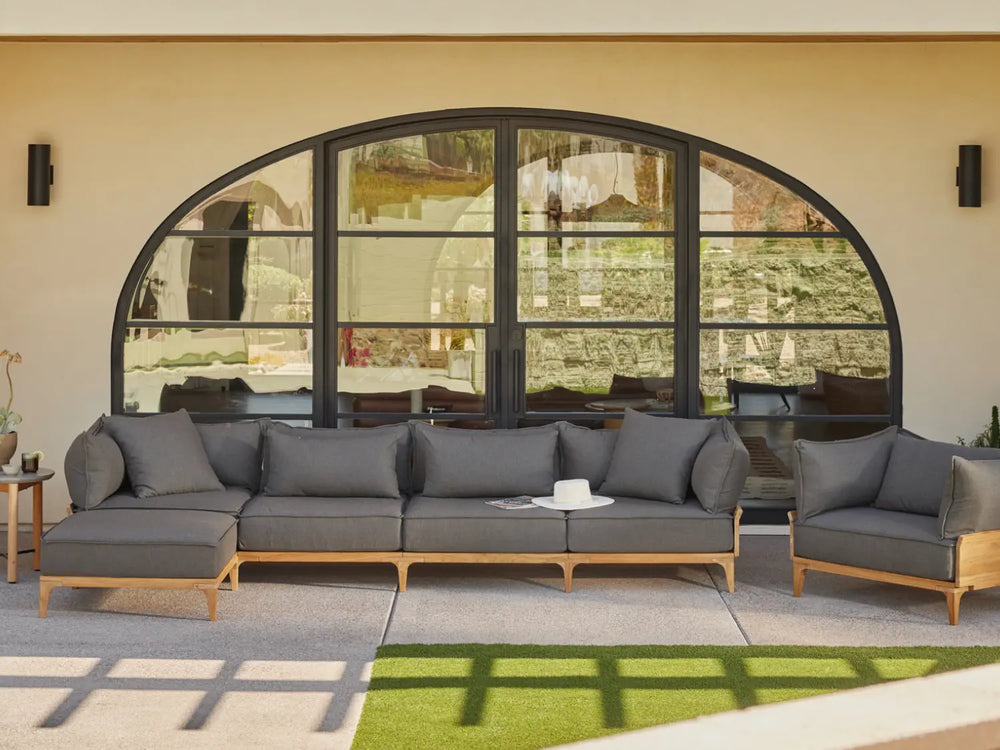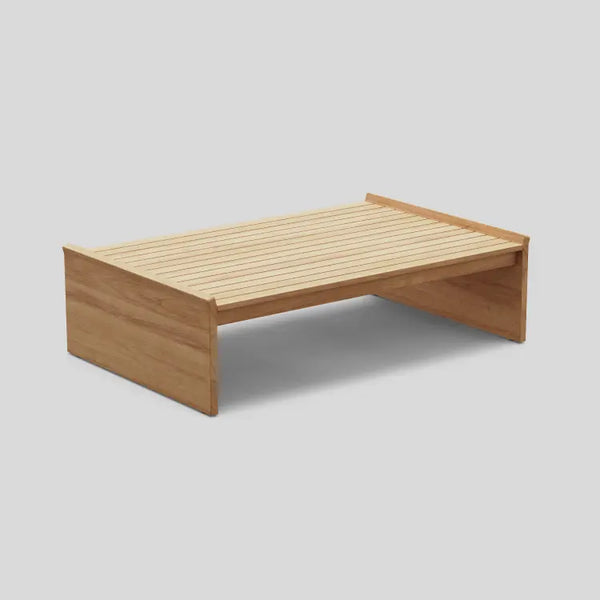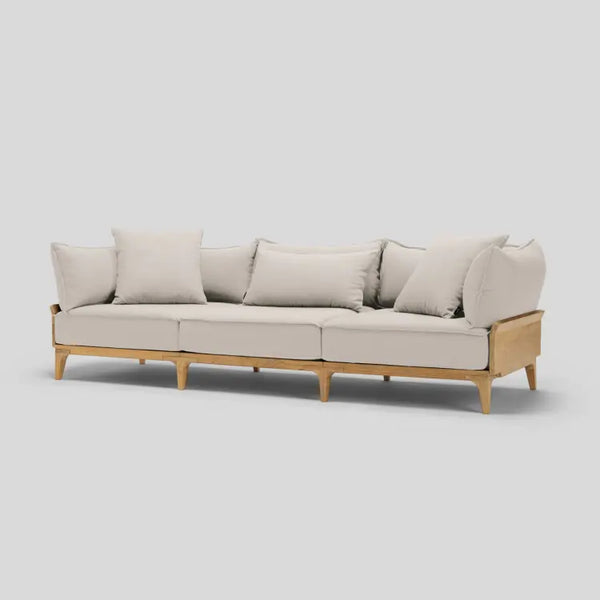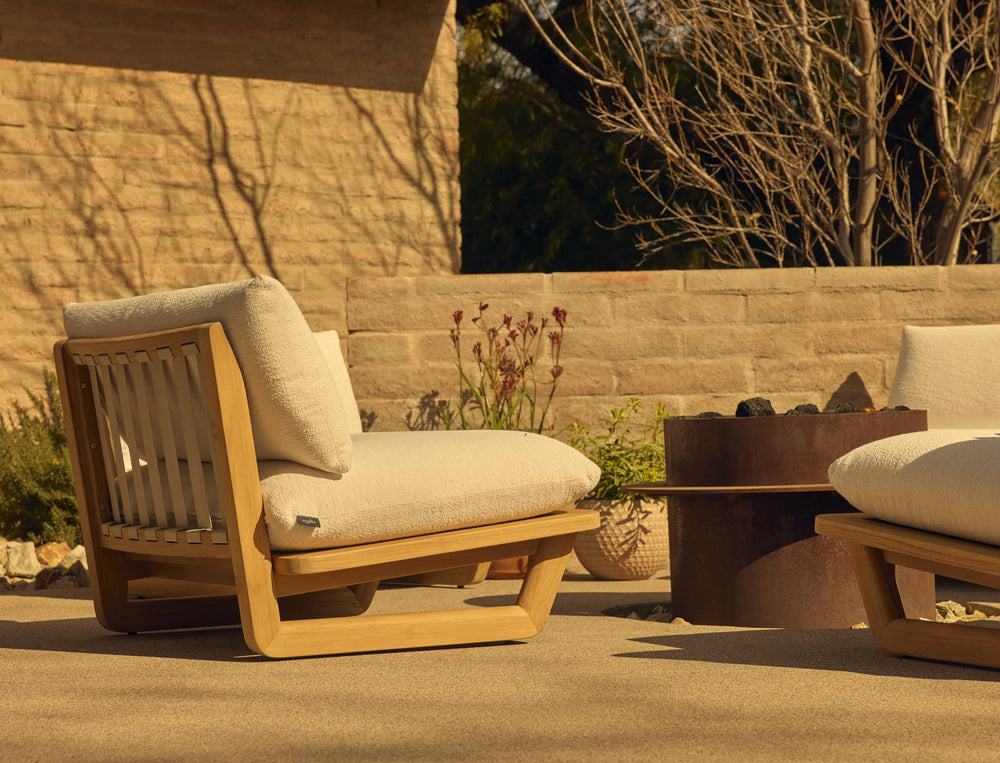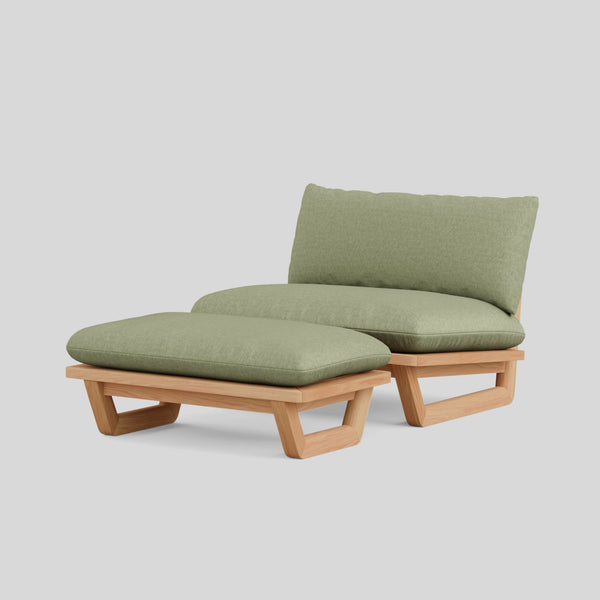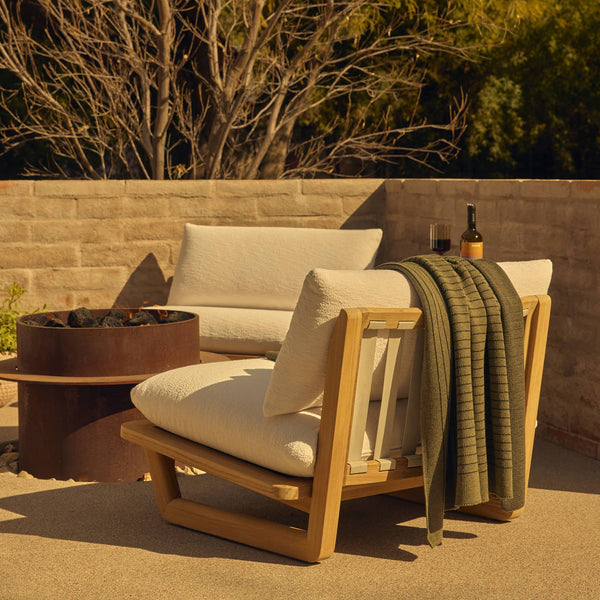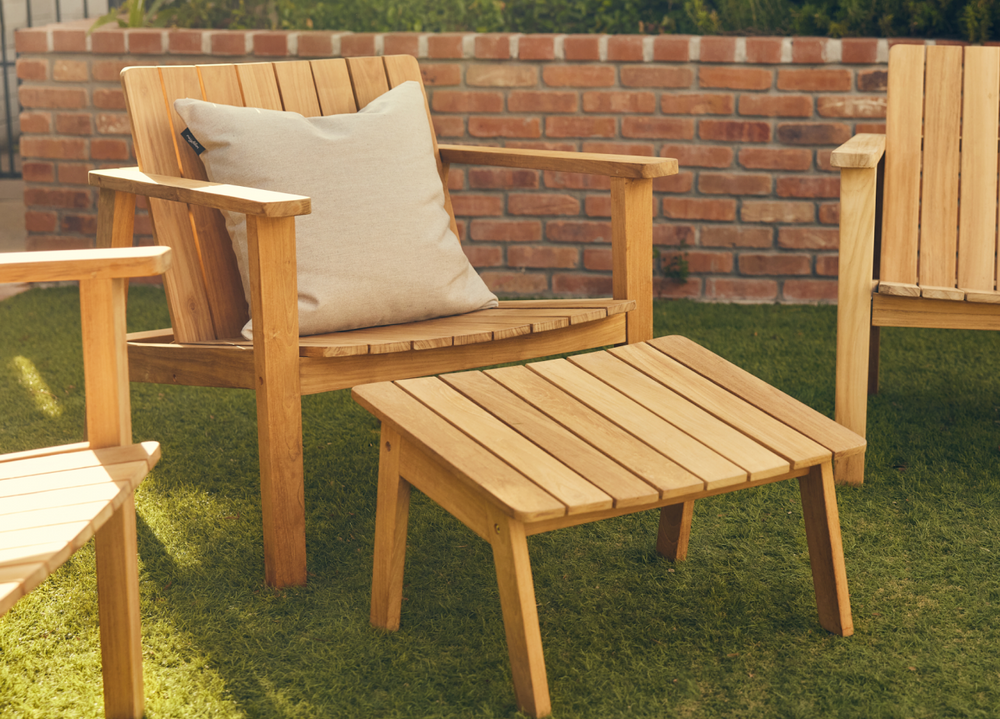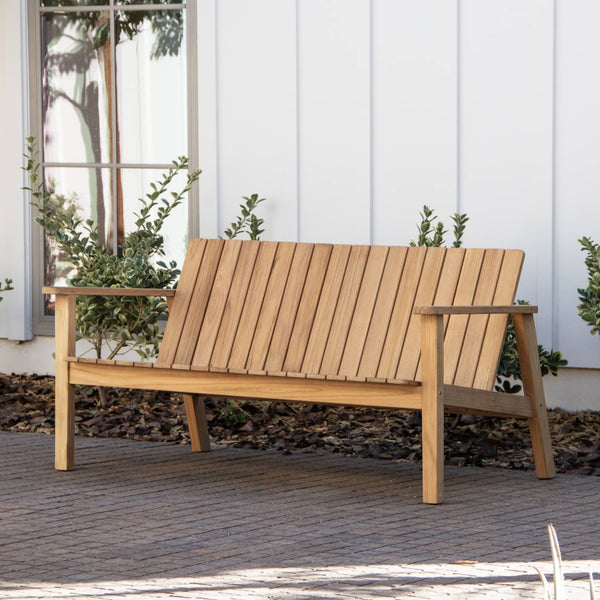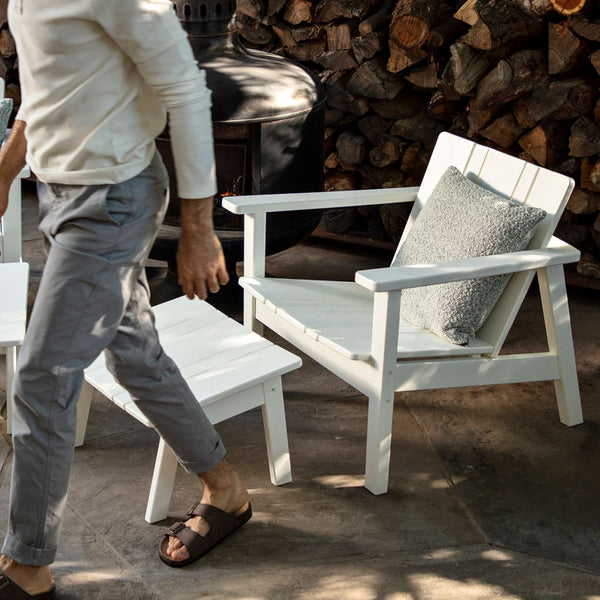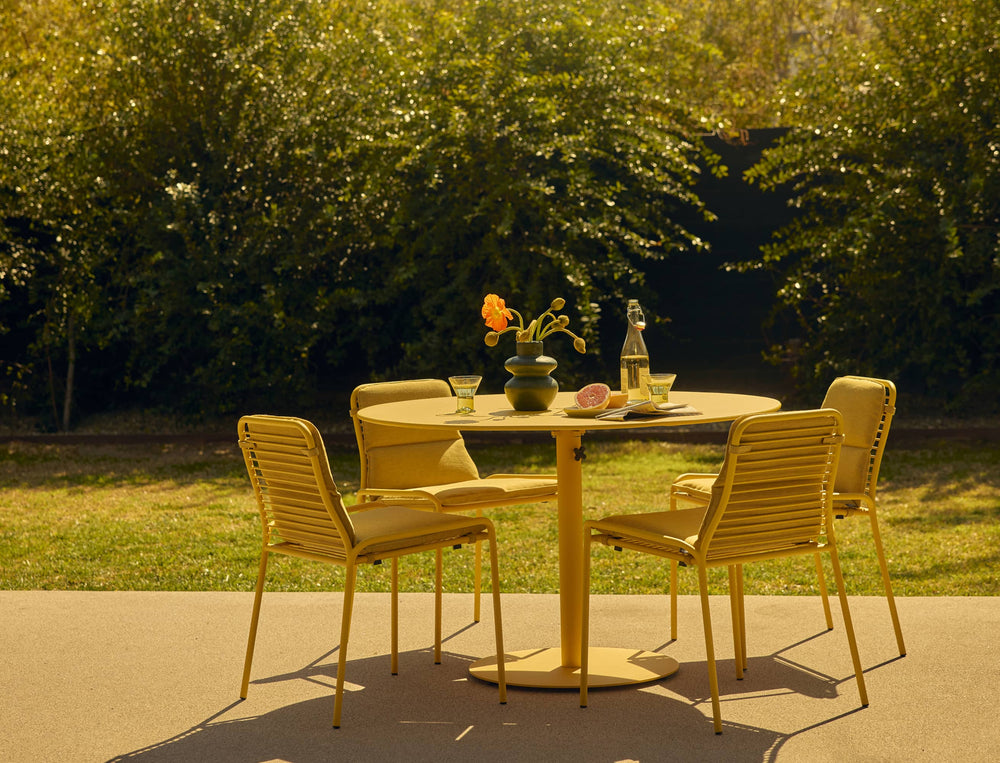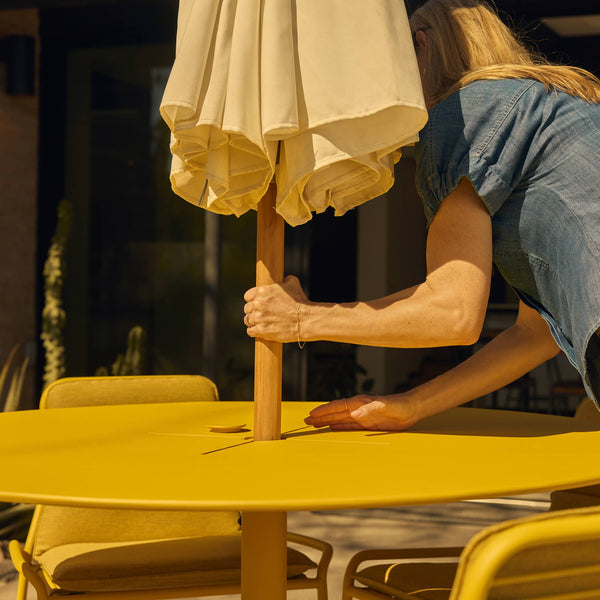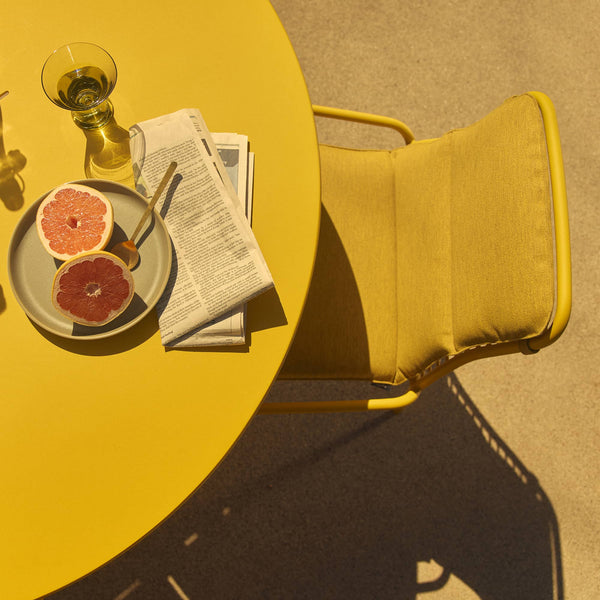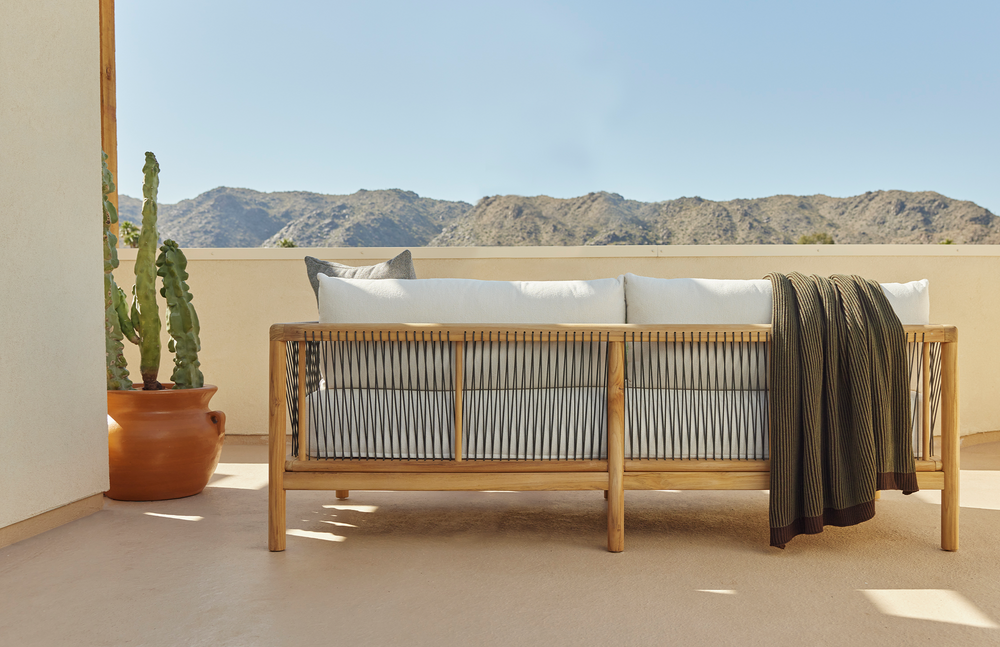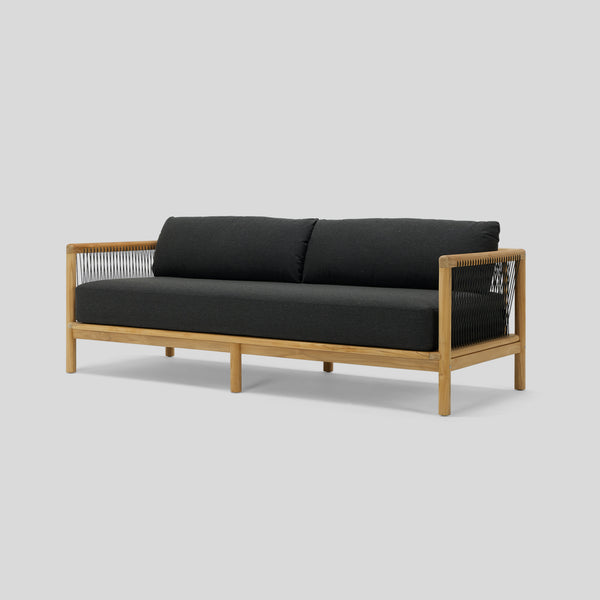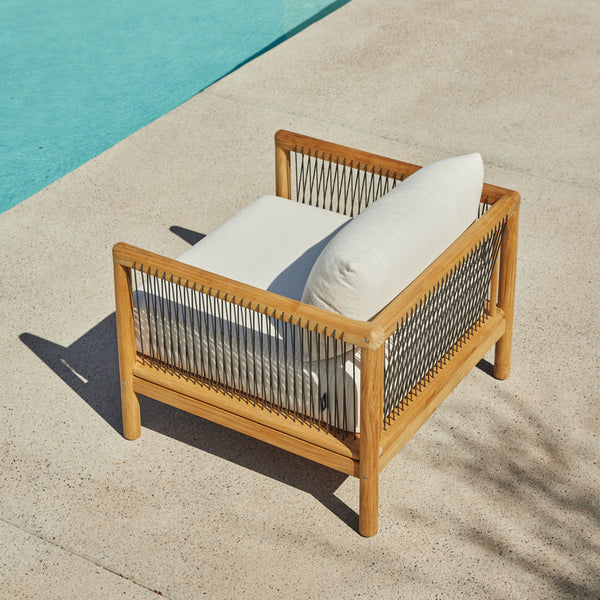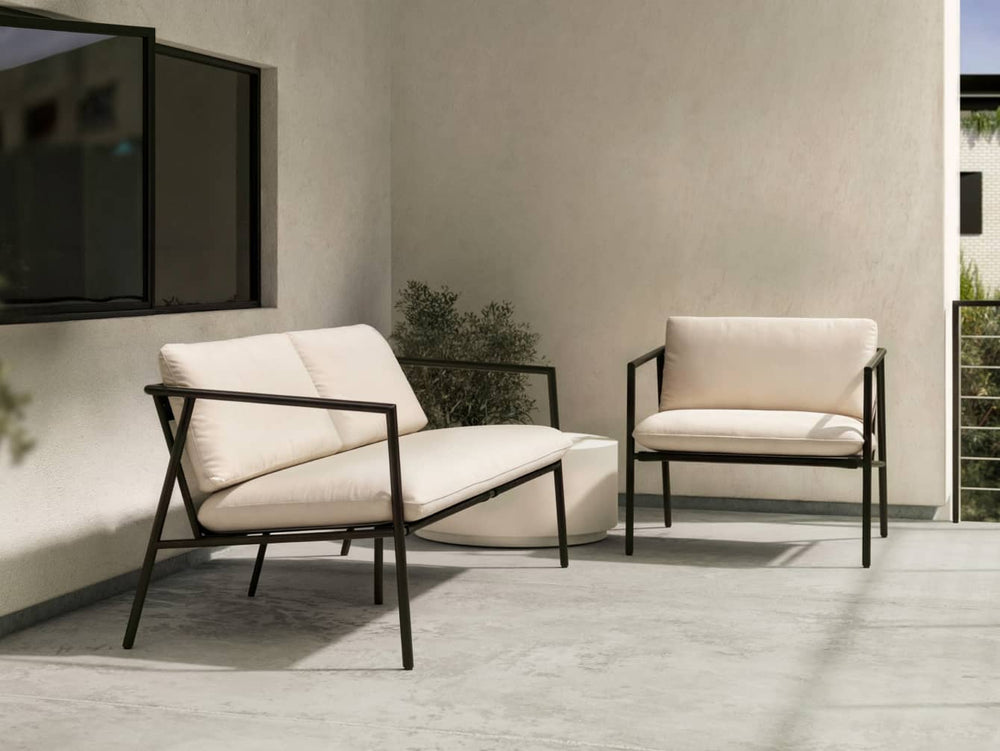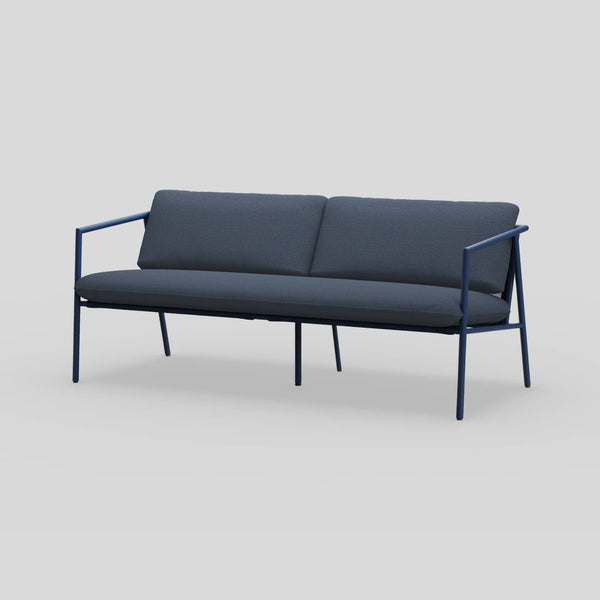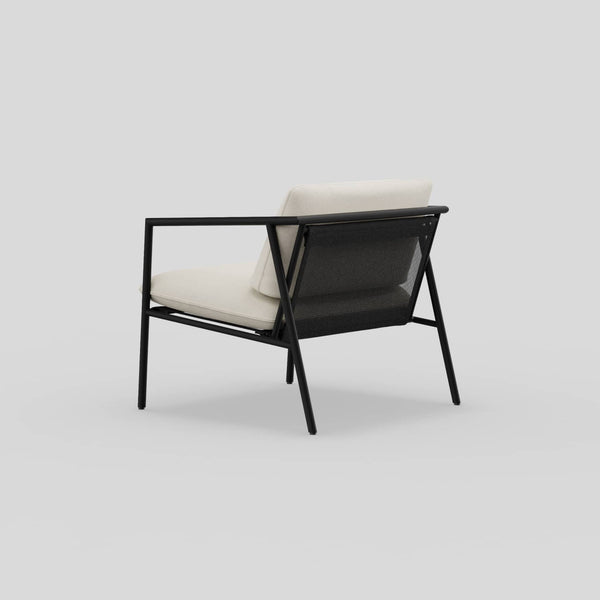Outdoor Wood Furniture Buyer's Guide
Written by Neighbor Editorial Team | @neighboroutdoor | Opens in a new window. |
Here's what you need to know before buying wood furniture for your outdoor space.

The right outdoor furniture setup will extend your living space and provide a relaxing retreat for you to unwind or connect with friends and family. If you're looking for the perfect outdoor furniture for your space but don't know where to start, you're in the right place. This is your guide to buying wood furniture.
What are the key considerations when buying outdoor wood furniture?
Wood has long been used as a staple material in construction, ship building and furniture manufacturing. Known for its durability, versatility, natural beauty and compatibility with other materials, wood remains as one of the most valuable and longest lasting materials in outdoor furniture. Different woods have different properties, strengths and weaknesses, so it can be challenging to determine which wood type is most suitable for your home.
From budget to climate, there are a few key considerations to take into account before deciding on the best wood pieces to bring your space to life.
Budget
How much are you looking to spend? Outdoor furniture comes in a wide range of prices, based on the type of wood, the size of the furniture and the manufacturing process. With wood furniture, you get what you invest. In other words, if you’re looking to spend in the low hundreds for an outdoor sectional, you’re going to compromise quality and longevity. Cheaper wood pieces often have to be replaced within a few years, or even a few seasons. When you invest in your outdoor wood furniture, you get to enjoy your outdoor space for decades to come.
Climate
Not all wood materials are weather-proof. Moreover, furniture that is ‘weather-proof’ in one area of the world may not be weather-proof in another region. Consider your local climate. Do you have harsh winters? Blazing summers? Heavy winds? These elements can do some serious damage to wooden pieces that aren’t designed for all-weather resistance.
Understanding your climate will help you take proper measures to protect your wood pieces too. If you live in a rainy environment or have snow and ice in the winter, choosing a water-resistant wood will ensure that your furniture doesn’t absorb water, crack or grow mold when the rain comes.
Patio Surface
Where will your wood furniture live? If you have a patio deck, concrete balcony or another hard surface space, most types of wood will work. If you have a softer, grassier area or lots of trees and plants in close proximity, it’s important that you choose a type of wood (like teak) that repels pests and insects and is not susceptible to wood rot or fungi growth.
What is the best wood for outdoor furniture?

Some of the most common types of wood for outdoor furniture include teak, acacia, black locust, cedar and redwood. Here are the pros and cons of each type.
Teak
The trusted wood of choice for shipbuilders in the middle ages, teak wood has been regarded as one of the best woods for outdoor furniture for centuries now.
Pros of teak wood
- Durability - Teak wood is incredibly durable with natural oils that repel water, making it resistant to most forms of wood rot, fungi and pests. This water-resistant quality prevents teak wood from warping, cracking, rotting or wearing down in rainy conditions. These qualities are what attracted shipbuilders when looking for a leak-proof, decay-proof material.
- Weather-proof - Proven to stand the test of time throughout all seasons, durable teak wood holds strong in coastal areas with high humidity, wetter regions with heavy rainfall, areas with drastic temperature changes and areas with consistent sun exposure. Teak furniture can be left outside year-round and maintain its durability in extreme conditions.
- Maintenance - Teak wood is easily maintained and can be cleaned thoroughly with a simple solution of soap and water along with a sponge or soft-bristle brush.
- Appearance - With an undeniably beautiful appearance that only gets better with age, teak wood has a honey-gold hue that lightens to a silvery-gray patina over the years. Teak has a tight wood grain with a predominantly straight pattern.
Cons of teak wood
- Affordability - While there aren’t many cons to teak wood, this wood type is more expensive than other outdoor materials. Teak wood is more expensive, but it’s also extraordinarily durable with natural protective qualities and is one of the longest lasting furniture choices for wood.
Acacia
Derived from over 800 species of Australian-native acacia trees and shrubs, acacia wood was originally used to reforest areas in the 1740’s.
Pros of acacia
- Durability - Acacia wood has dense wood grains, is naturally durable, difficult to damage and exceptionally resistant to warping. Acacia wood furniture is known to last for 30+ years with little to no maintenance.
- Weather-resistance - Naturally water repellent, acacia wood can endure rain, snow and humidity with the right treatments.
- Maintenance - Acacia wood is easily maintained and can be cleaned thoroughly with a simple solution of soapy water along with a sponge or soft-bristle brush.
- Appearance - With unique grain patterns and contrasting colors, acacia wood has a beautiful, rich, reddish-brown appearance. It can also be treated with a finish to enhance and prolong the natural grains. As it ages, acacia wood develops a dark gray patina.
- Affordability - Acacia wood is known to be one of the more affordable wood furniture materials. While it is more expensive than some American woods like maple, it is less expensive than other exotic hardwoods like mahogany and rosewood.
Cons of acacia wood
- Weather-proof - Affordable acacia wood still requires maintenance and although it is water-repellant, it is not completely waterproof (like teak is). This wood will absorb moisture under the right conditions and is susceptible to cracking or splitting in extreme heat. Applying a sealant or tung oil to acacia wood is necessary to prevent water seeping into the wood.
Black Locust
While not as common as other hardwoods, black locust timber has been used to manufacture furniture and building structures since the early 1600s.
Pros of black locust wood
- Durability - Like teak wood, black locust wood repels termites and resists decay and wood rot. It has high resistance to the elements and can stand strong for up for 60+ years without staining or wood protectants. Black locust wood is often used as a construction material for buildings, due to its extraordinary strength.
- Weather-resistance - Naturally water resistant, black locust wood can endure rain, snow and humidity. Black locust wood is one of the most rot resistant North American woods.
- Maintenance - Black locust wood is easily maintained and can be cleaned thoroughly with a simple solution of soapy water along with a sponge or soft-bristle brush.
- Appearance - Furniture made from black locust wood has a natural, grainy appearance with knots and mineral streaks. The wood can range from pale green to dark brown, straight-grained wood and is ideal for complementing contemporary design.
- Affordability - Black locust wood is a more affordable option among exotic wood furniture materials, but it is more expensive than conventional hardwood materials.
Cons of black locust wood
- Manufacturing - Black locust wood is not as easy to cut and manipulate for manufacturing, compared to other hardwoods. It is prone to splintering and cracking during the cutting process. This wood is also susceptible to infestation by locust borer, a species of longhorn beetle. Locust borers will create tunnels through the tree for larvae, which weakens the tree and makes it vulnerable to breaking and splitting in various weather conditions.
Cedar
Cedar wood is a softwood that has been used in furniture manufacturing for more than a century in North America and Europe. There are a variety of different cedars, but red cedar and white cedar are most commonly used for lumber.
- Weather-resistance - Naturally resistant to moisture, decay and insect damage, cedar wood holds strong in wetter regions and areas with high humidity. Cedar wood has natural air pockets that act as insulation, protecting the wood from drastic temperature changes and preventing cracks or warping.
- Maintenance - Cedar wood requires less maintenance than many other outdoor furniture woods. Because it is naturally resistant to moisture and rot, cedar wood does not require a protective finish. Cedar furniture can be cleaned with a solution of detergent and water, or diluted bleach for deeper cleans.
- Appearance - With a soft light honey appearance, cedar wood ages beautifully, turning to a rich reddish-brown over time. Cedar will start to darken after about two weeks which may be a con based on your preferences.
Cons of cedar wood
- Durability - Cedar is not the hardest wood. It’s not equipped to support heavy loads and is not as strong as stiffer woods, specifically teak wood and redwood. Cedar is relatively delicate and can easily incur dents, dings or scratches. Over time, cedar furniture can crack along the wood's natural grain, and although this is not structurally damaging, it can compromise aesthetic and appearance.
- Affordability - While cedar is not as expensive as some hardwoods, it is on the more expensive end of the wood material spectrum.
Redwood
The tallest trees on earth, redwood trees can grow up to nearly 400 feet tall. These trees have been harvested for consumer use for more than 200 years.
- Weather-resistance - Redwood is one of the most resistant types of soft wood and is naturally resistant to water, wood rot and insect infestations.
- Appearance - With a reddish-brown hue and straight grain pattern, redwood furniture brings warmth, hand-crafted appeal and timelessness to any space.
Cons of redwood
- Durability - Like cedar, redwood is relatively delicate and can easily incur dents, dings or scratches. It is not ideal for areas with high temperatures or high humidity, as extreme heat can crack the wood. Redwood furniture is best kept away from direct sunlight.
- Maintenance - To maintain redwood’s original strength and vibrance, this wood requires regular maintenance and yearly finishes. Harsher cleaning ingredients should not be used on redwood.
- Affordability - While redwood is not as expensive as some hardwoods, it does reside on the more expensive side of soft wood furniture.
How to Protect Wood Patio Furniture

Some woods (like teak wood) are a lot easier to maintain than others, but even the most durable woods should be cared for regularly to preserve the original quality throughout the seasons.
Protecting wood surfaces
High-quality woods have natural protective properties that minimize the need for protection. However, surface stains happen. Life can be messy. To prevent spills or stains from leaving a mark on your wood furniture, use a solution of soapy water and a soft-bristle brush or sponge to lightly agitate the stain.
In case of a spill, blot the area with a dry, clean towel, don’t rub the stain further into the wood. It’s best to treat spills as soon as they happen to prevent the need for a deeper clean.
Protecting teak wood
Although not necessary, you can use a teak protector or wood sealant solution to enforce its water resistance.
Protecting acacia wood
Acacia wood should be sealed with linseed oil or tung oil to protect acacia furniture from water damage and UV damage.
Protecting soft woods
For soft woods, like cedar and redwood, tung oil or linseed oil should be used to create a protective film over the wood surface and reduce sun damage.
Maintaining vibrance
Natural wood materials will develop a patina, or change colors over time. This is one of the beautiful advantages to quality woods like teak wood that lighten to a silvery gray color with age. If you want to prolong the original color of your wood furniture, apply a protector or sealer when you first receive your furniture. Sealants are easy to apply, and with regular application, will prevent your furniture from changing colors.
We often recommend letting your teak sofa or dining table age naturally, since this requires the least maintenance and will add a natural worn appearance of the years. To maintain cedar or redwood hues and prevent moisture penetration, finish your furniture with a light-penetrating sealer. Cedar and redwood will still lighten with age, regardless of wood sealants or protectants.
Wood furniture FAQs

What wood furniture can be left outside in the winter?
Quality wood furniture that is specifically designed for all-weather resistance can be left outside in the winter. Neighbor’s teak outdoor dining set, for example, features durable teak wood and marine grade hardware for all-weather corrosion resistance. Opt for furniture designs with water-proof and rot-resistant wood materials that prevent damage from cold weather and are engineered for a long life outdoors.
What wood lasts the longest outdoors?
We have to hand it to teak wood as the longest lasting furniture material. Teak wood’s durability is unmatched by other woods and does not require treatments or finishes to prolong its life. With exceptional weather-proof properties naturally ingrained, teak wood is highly-regarded by outdoor furniture experts. If teak furniture works for your budget, we suggest making the investment. You’ll thank yourself in 30, 40 or 50 years when your original teak setup is still as strong and stunning as it was on day one.
How do you weatherproof outdoor wood furniture?
Quality outdoor furniture is weather-resistant, but not all woods are completely weather-proof. If you live in an area with extreme weather conditions (high temperatures, high humidity, significant rainfall, intense winds, snow and ice) it’s a good idea to use a waterproof, tear-proof protective cover. Furniture covers can prolong the life of your outdoor furniture significantly.
A protective cover provides a barrier between your furniture and the elements, helping to maintain the original beauty and cleanliness of your outdoor space. All types of wood can benefit from a protective cover. Neighbor’s tailor-fit protective covers are 100% waterproof and made of ripstop that won’t tear or fade. A covered outdoor setup can weather the heaviest of storms without damage.

